From a charming hazel grove into a mysterious cave – be surprised by the cape Karkalinniemi in Lohja
Article by Johanna Suomela
Want to get deep in your thoughts and go to a mystic forest? To another world where place and time lose their meaning? Wish to fill your ears with birdsong, sound of the waves and the silent rustle of aspen leaves? Is the green of the hazel bushes and mosses easy on your eyes? Want to taste some natural spring water or maybe descent deep underground? Then come to Lohja! We have all this, and we are close!
In the Lohjanjärvi Lake, the cape Karkalinniemi is a long and slender stretch of land extending southwest. The easiest way to get there is by car. If you are driving from Helsinki, the Turku motorway will carry you smoothly part of the journey.
Even the trip to the nature reserve is an experience. A little gravel road takes you through the cultural landscape, where small farms, meadows, fields and rolling hills alternate. By the roadside, there’s a sign that indicates the end of a public road (“Yleinen tie päättyy”). Don’t worry, though, just take a right turn towards the Karkali strict nature reserve.
It’s early June. A fearless deer is grazing by the road and wonders who is coming here.
It has been an exceptionally warm day for this time of the year: plus 23 C. The heat lingers in the evening, as does the light. A blooming rowan tree welcomes the fried of nature. There’s no-one else around, so we are apparently the only visitors here at the moment.
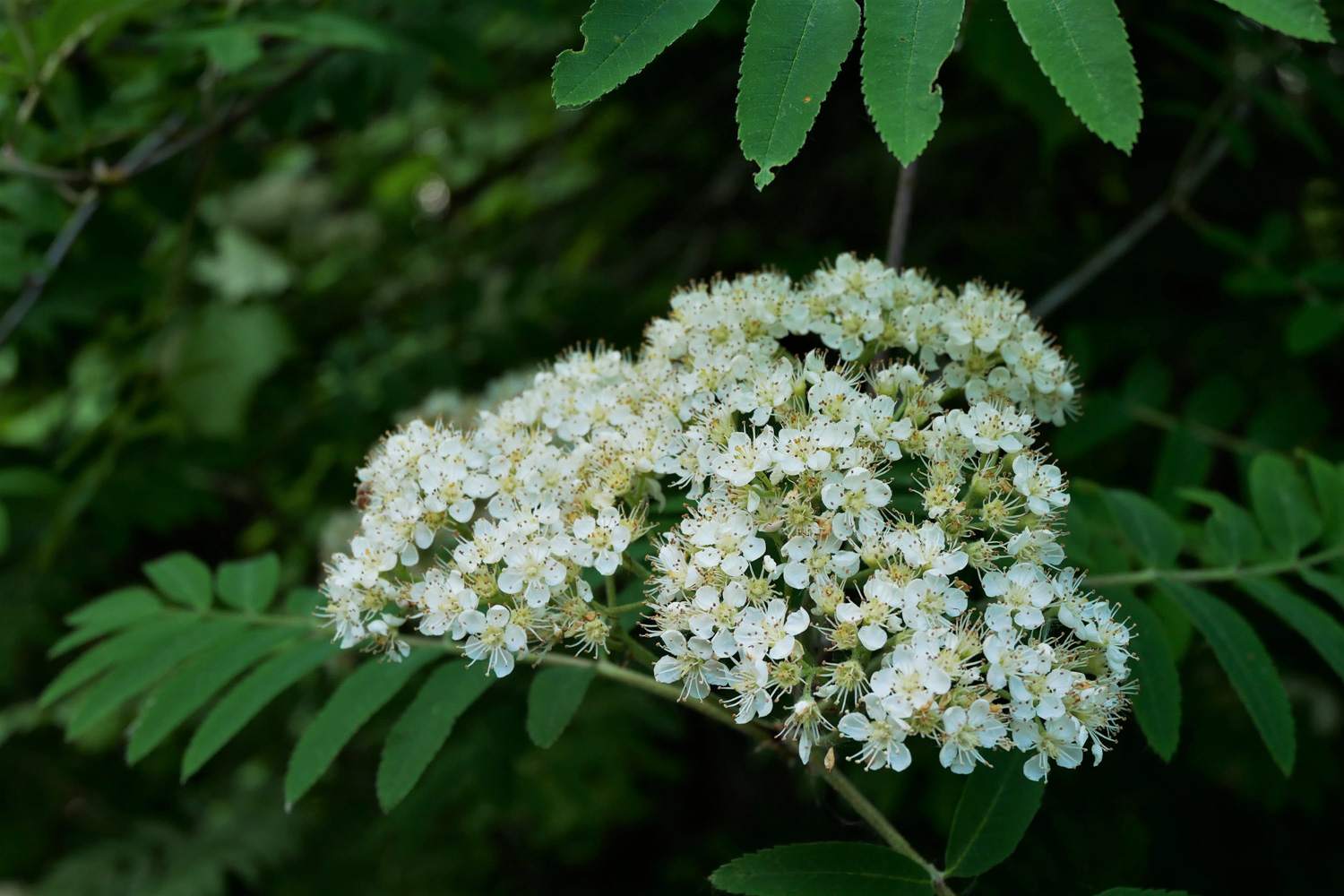
Nature reserves are normally entirely protected, and they are not publicly open. However, Karkalinniemi makes a difference. You can come to this paradise of hazel groves, if you remember to stay on the designated paths.
Picking berries and mushrooms is not allowed in Karkali, and everyman’s rights are not in force. Making fires, camping and mountain biking is also forbidden. If you want to go swimming, that will be possible only at the designated beach. Please don’t pick any plants or flowers, either.
This paradise welcomes anyone willing to obey the rules of Karkali. It is clear there’s absolutely no littering, too. Please take every piece of trash back with you when you leave. Litter-free backpacking is a must for every self- and nature-respecting person everywhere. Be a smart hiker and leave only footprints behind!
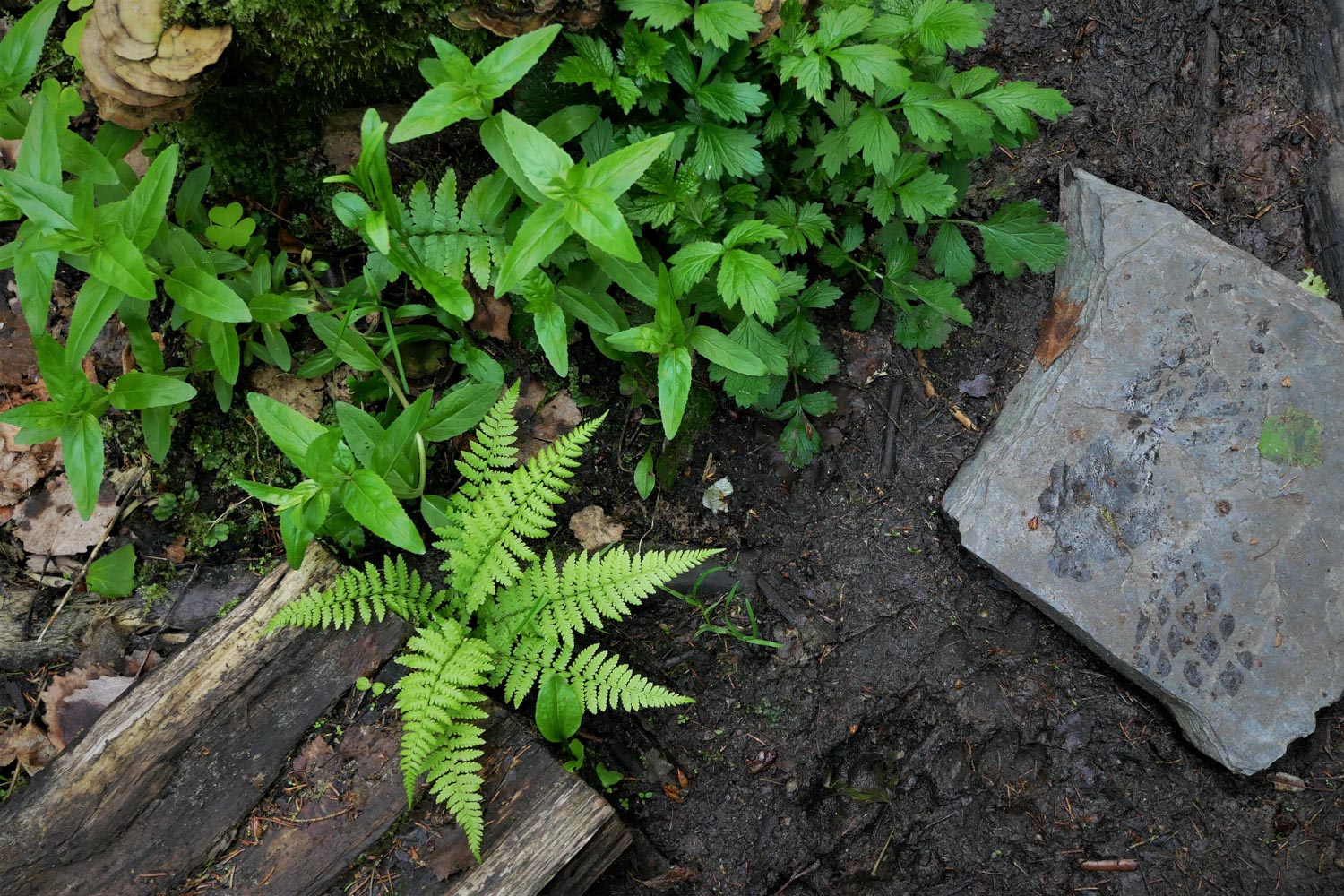

After a hard work day, Karkali provides us a dose of natural green medicine. The strict nature reserve of Karkali is definitely a place worth visiting, as it is one of the finest grove regions in Southern Finland. It is fresh and green everywhere. My restless mind relaxes, and I can almost feel my stress levels going down.
We begin our journey from the right side of the parking lot, and our intention is to walk around the cape counter-clockwise. We have two dogs with us, both of them on a leash. Pets must be kept on a leash at all times in nature reserves and national parks.
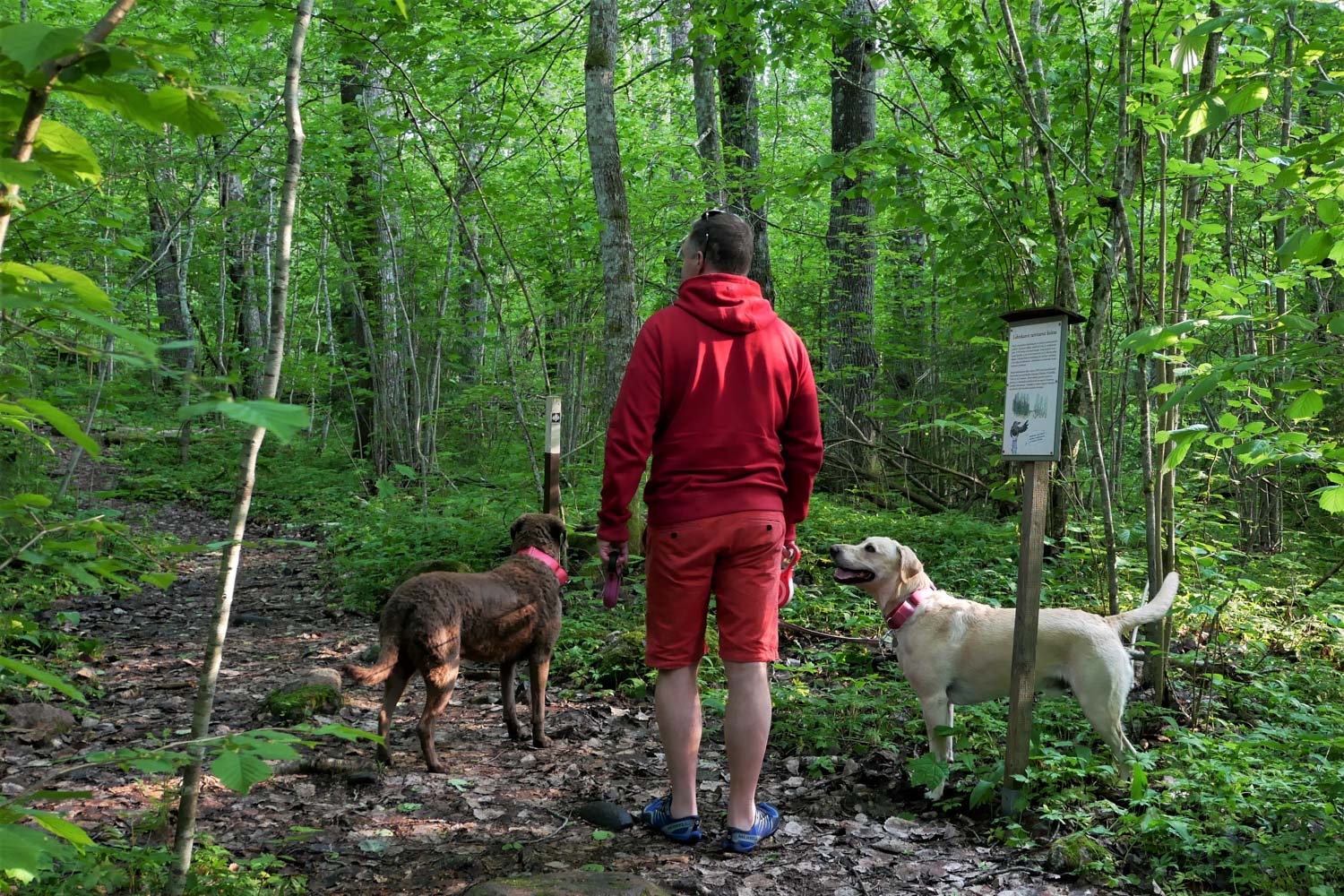
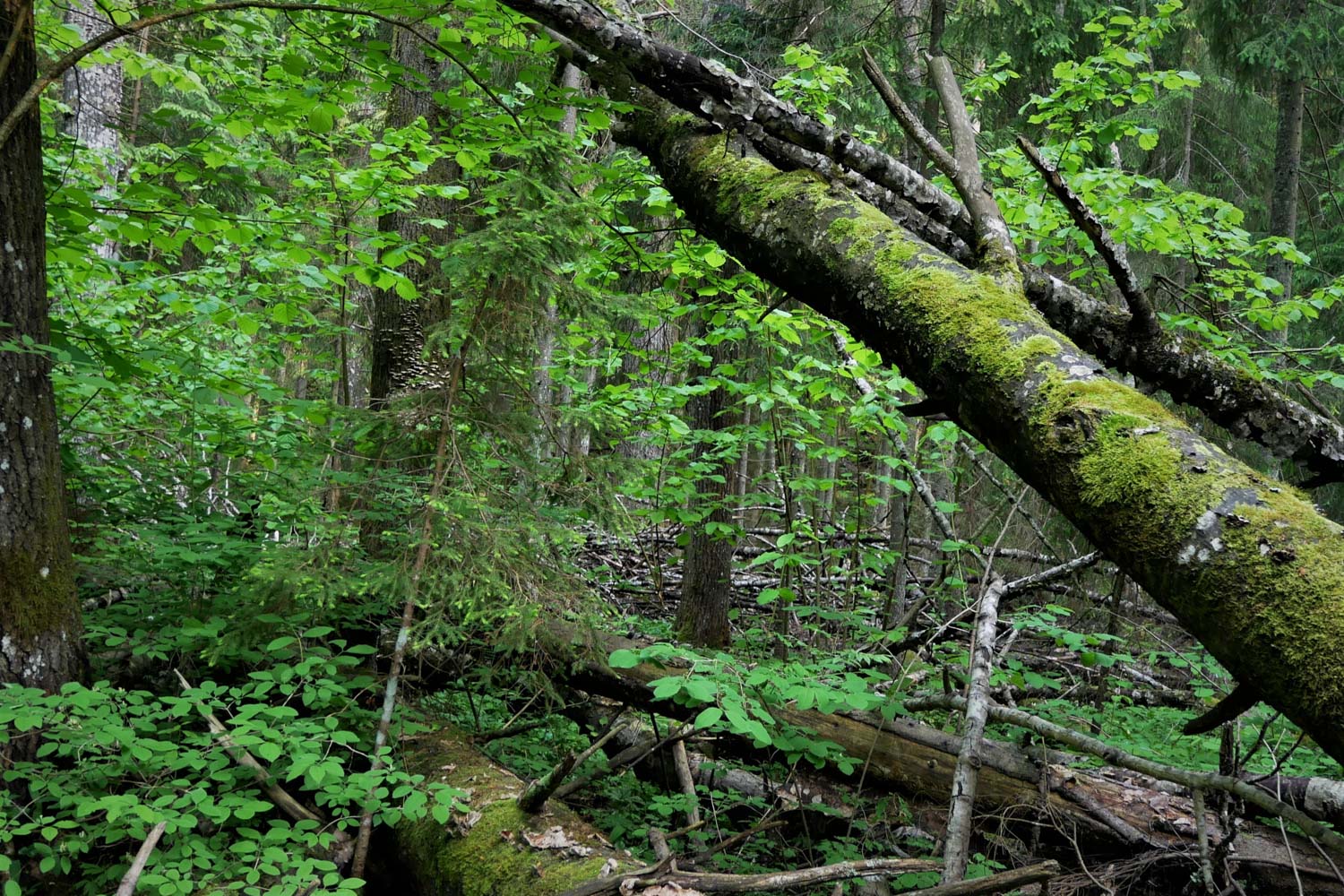
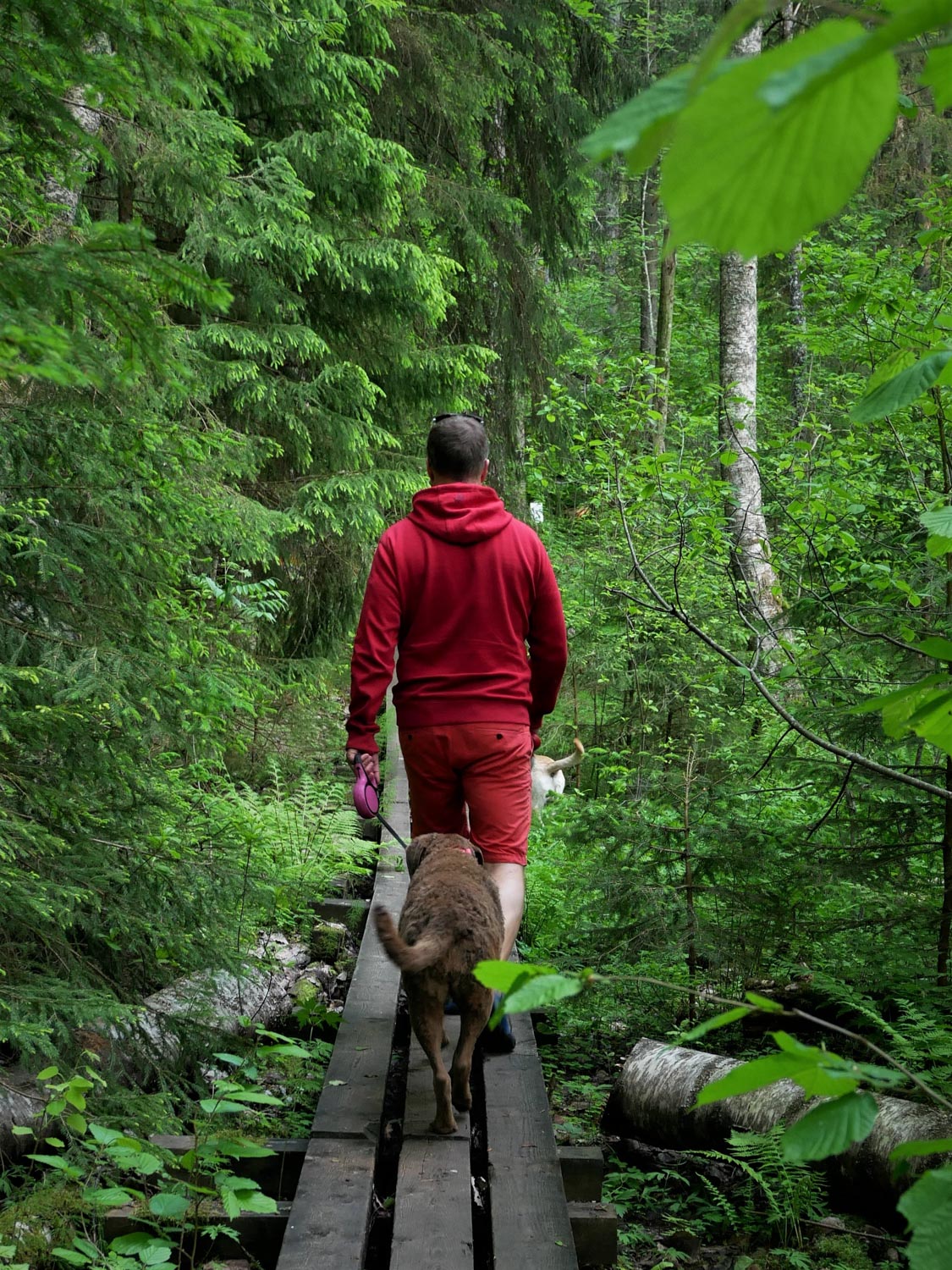
Stopping for a drink at the spring
We come across a wooden causeway right at the start of our walk. We have to stop almost immediately at a spring that lies just by the path. The spring is guarded by a tall spruce and surrounded by stones.
Even though there are some needles in the water, I just have to take out my wooden cup from my backpack and taste the water!
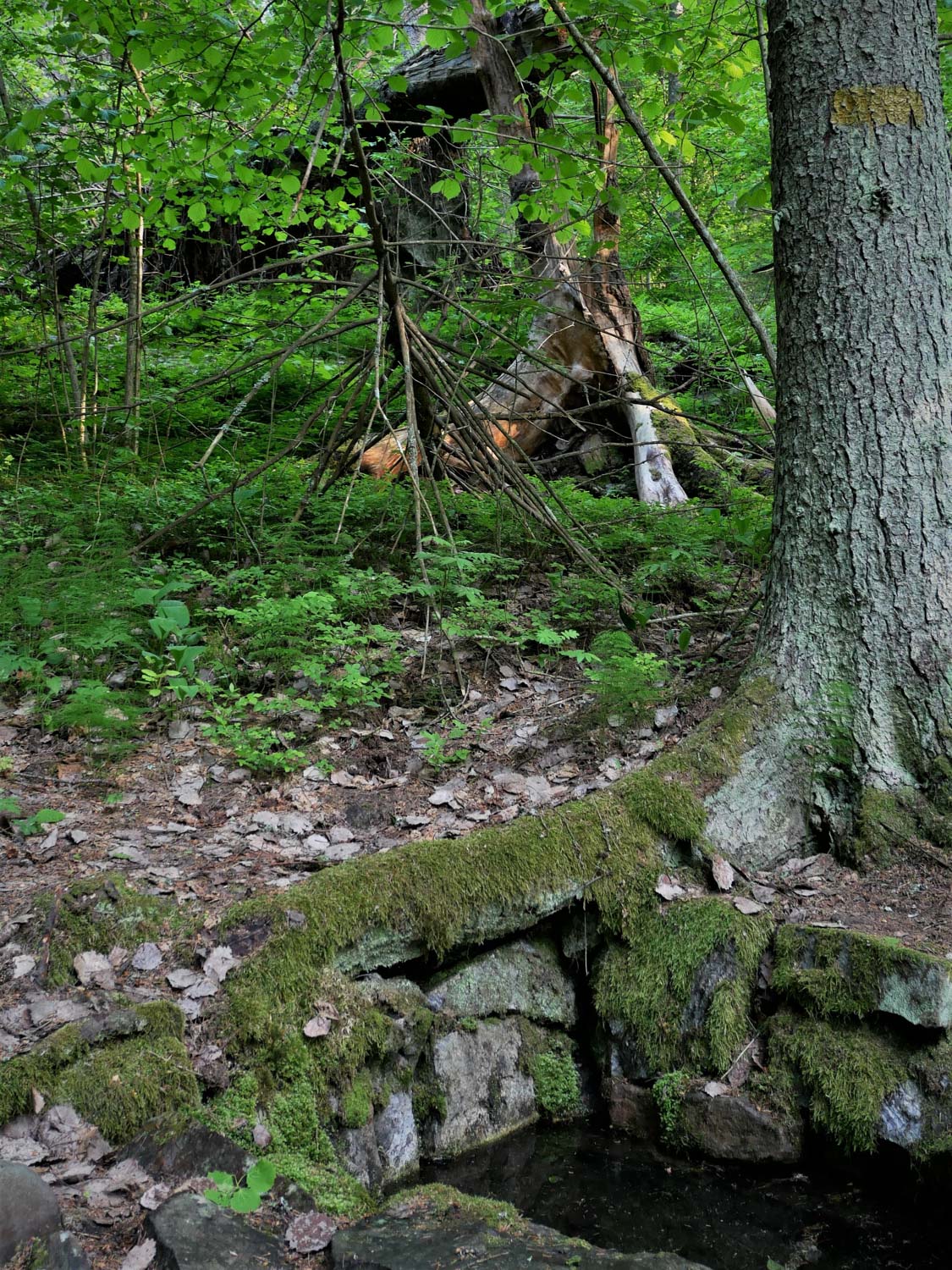
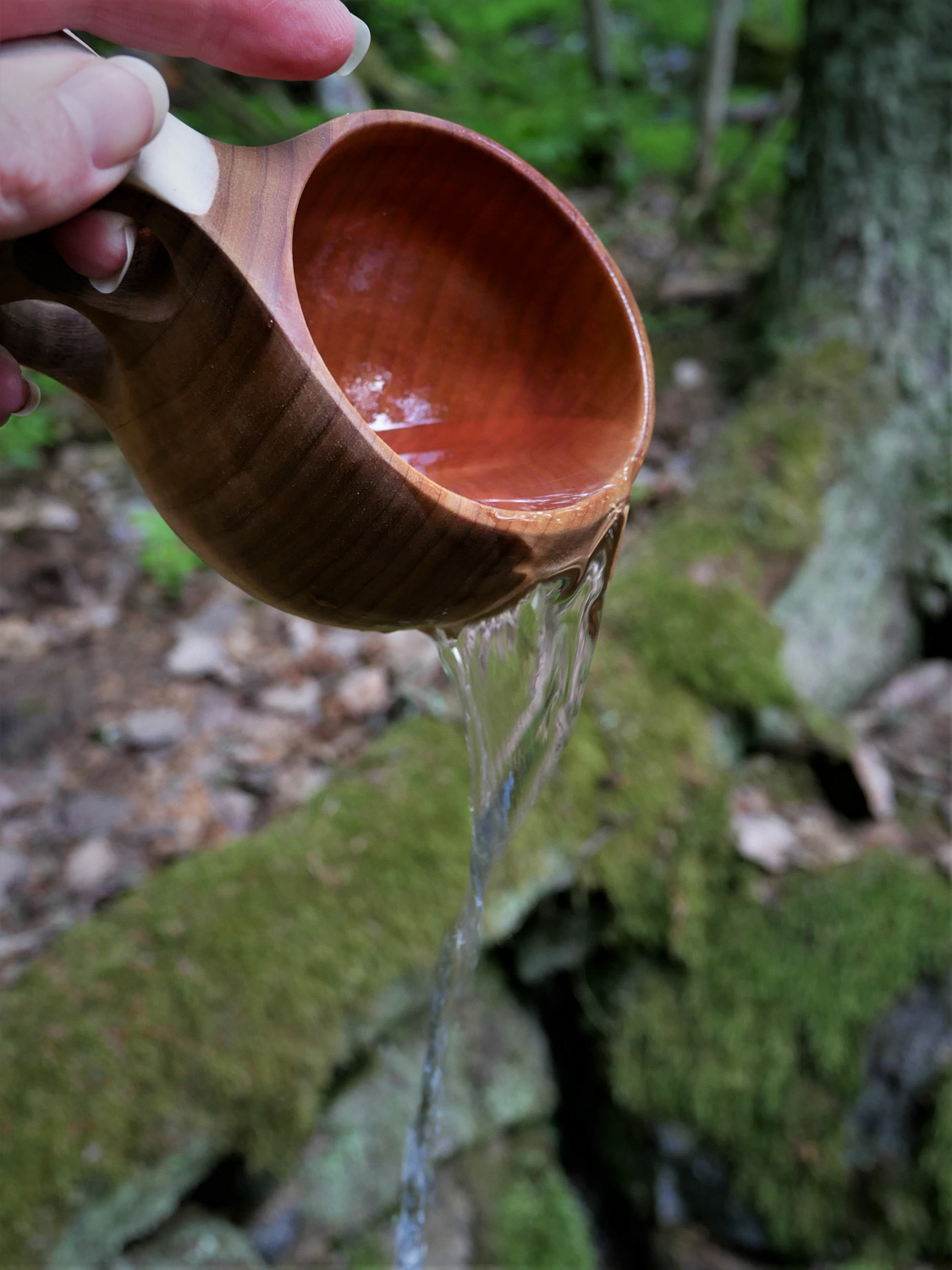
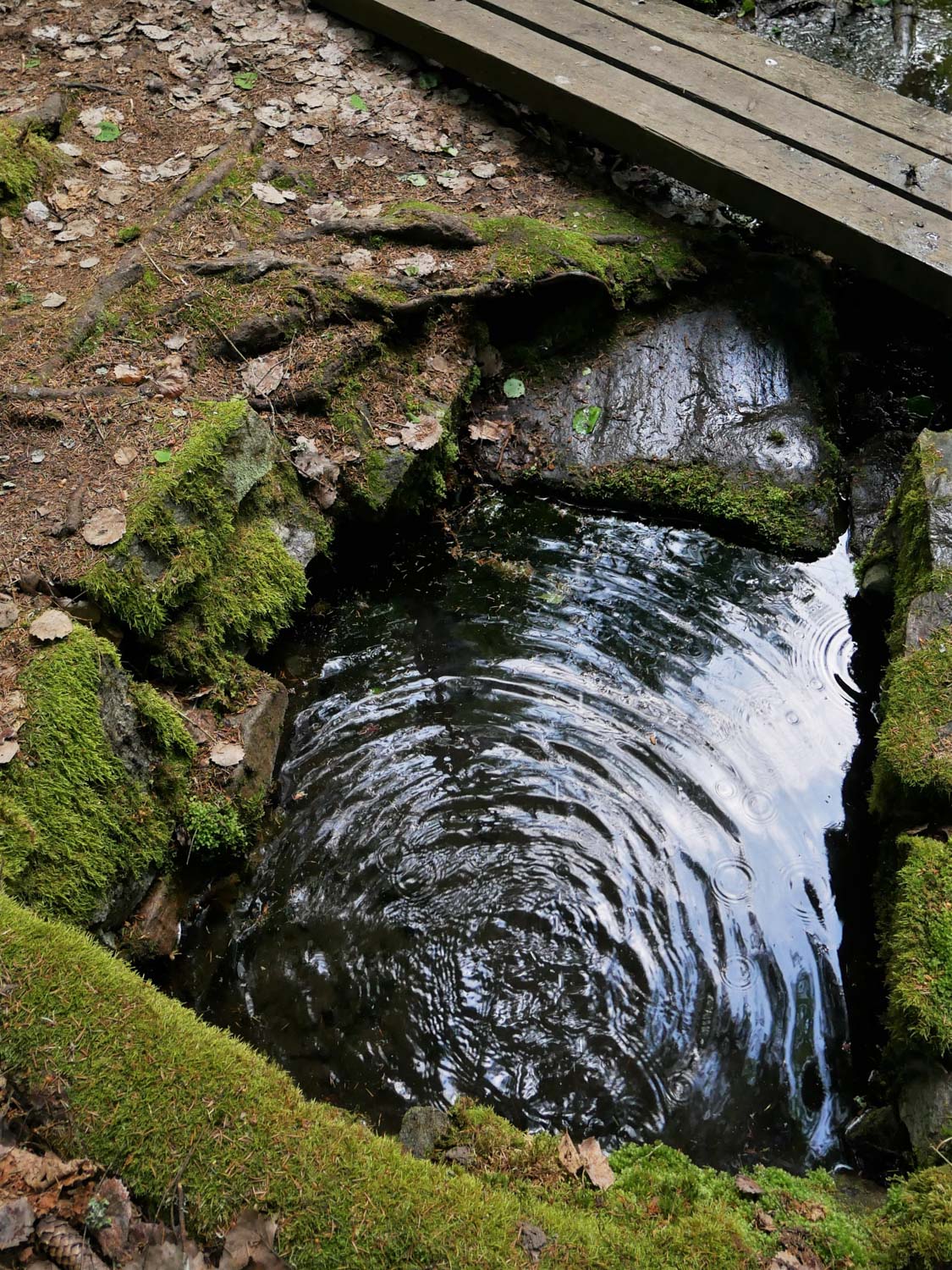
I take some water in the cup. The water is completely clear and odourless. It also tastes fresh, and nothing else. It is quite exceptional that in Finland, we can drink good-quality water straight from a spring whereas in many places even tap water is not clean enough for consumption!
The nature trail of Hanski-Hakki, the long beach route – or both?
The size of the Karkali nature reserve is 100 hectares. Protected in 1964, the reserve hosts lush hazel groves, wild moss-covered spruce forests and old pine trees growing on rocky cliffs.
The nature reserve has enjoyed over five decades of peace since the last residents left the place. Most of the evidence of humans is all but covered by nature. Only few stones remain to remind us of the three houses called crofts that used to be here. Old fields and meadows are now forests. The last and final loggings took place in 1950.
The length of the Hanski-Hakki nature trail is over 2 kilometres. Along the cone-marked trail, there are illustrated information boards with interesting facts about nature and animals of the reserve. There are roots and rocks on the paths so they are not accessible, even though the elevation differences are moderate. The path crosses itself a couple of times, and if you have small children who might get easily tired, you can shorten your hike down to half a kilometre.
Along the Hanski-Hakki trail, on the southern edge of the cape, there is a mooring site and a beach. On protected areas, both mooring and swimming are allowed only at the designated sites to protect fragile nature.
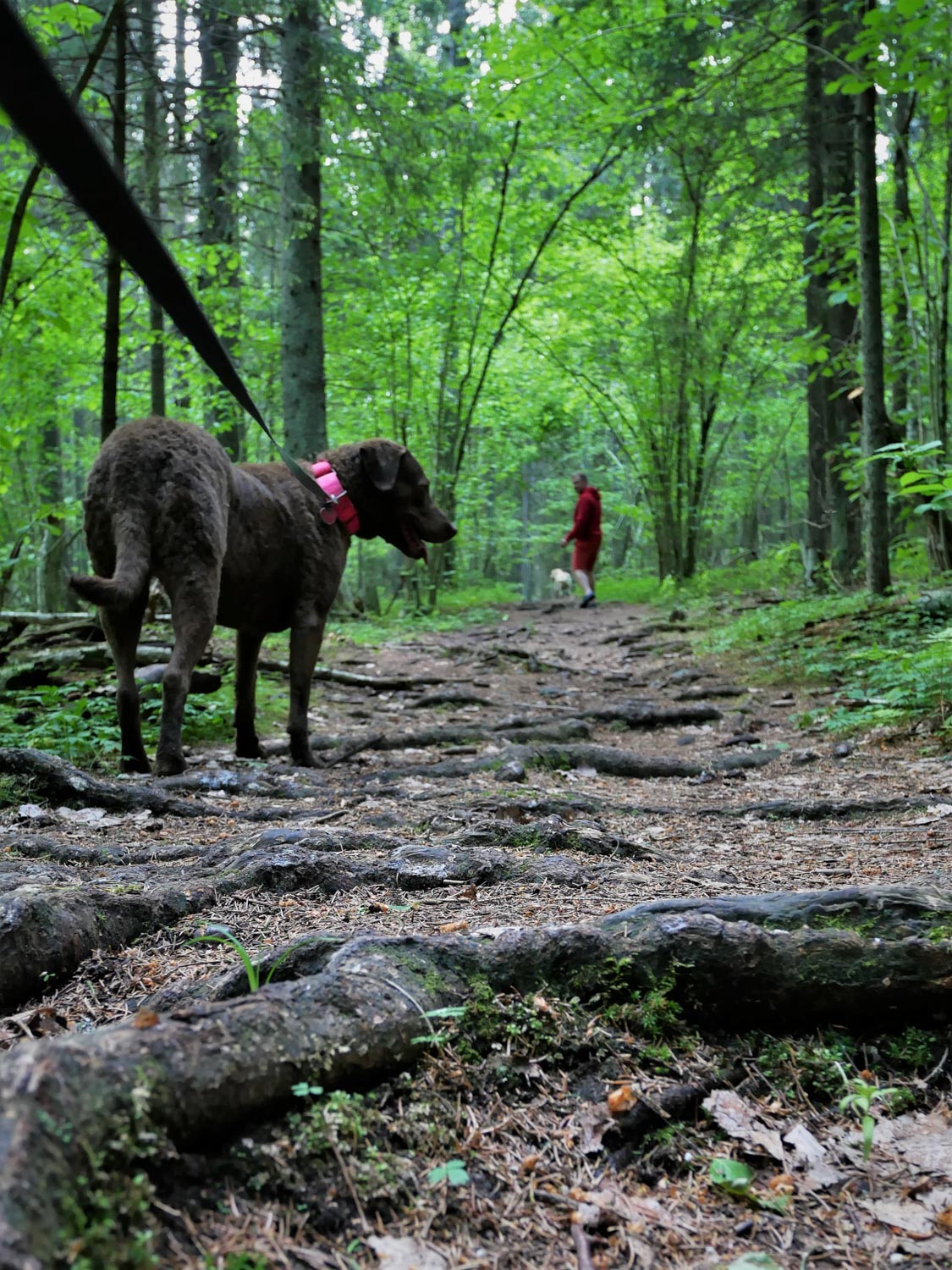
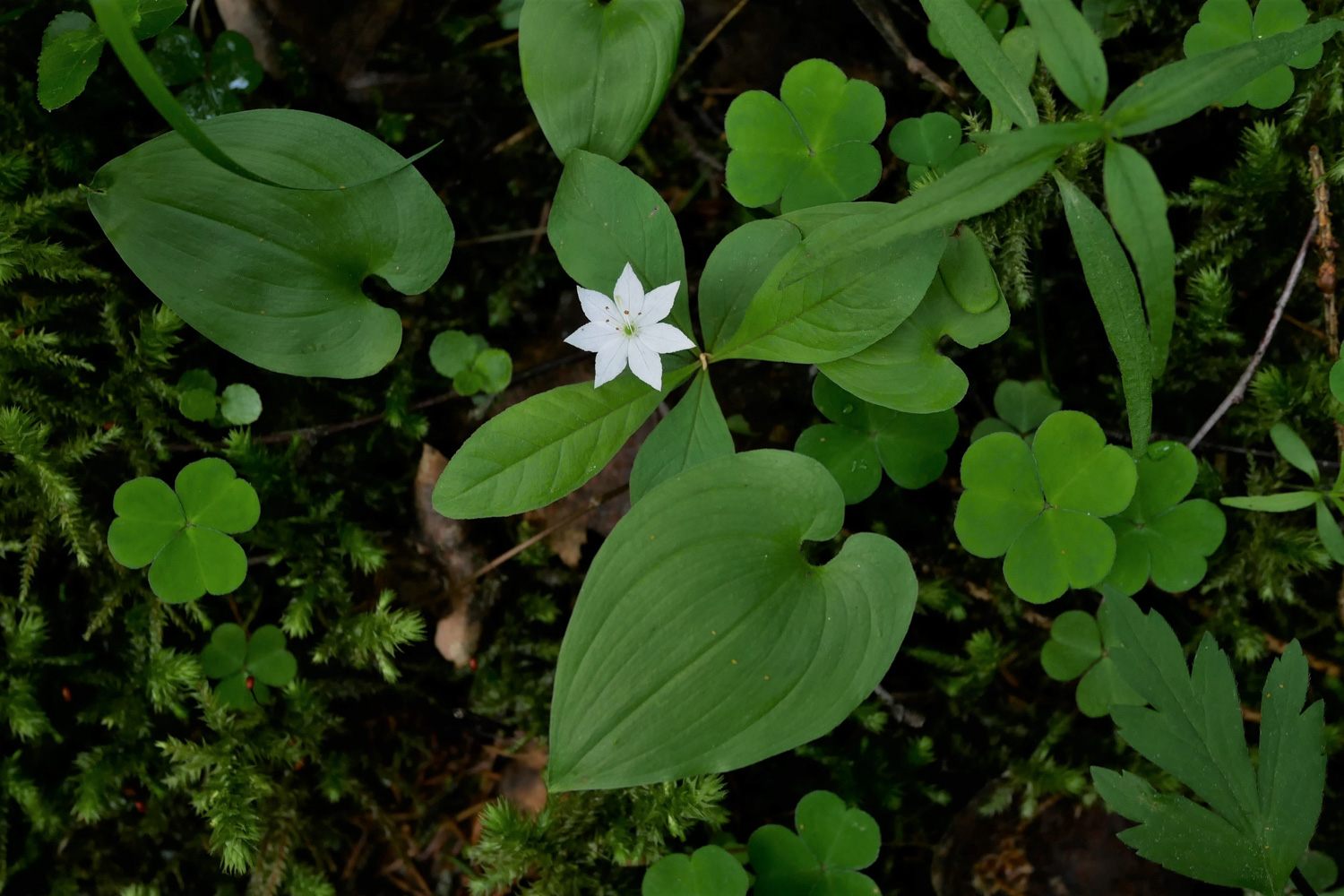
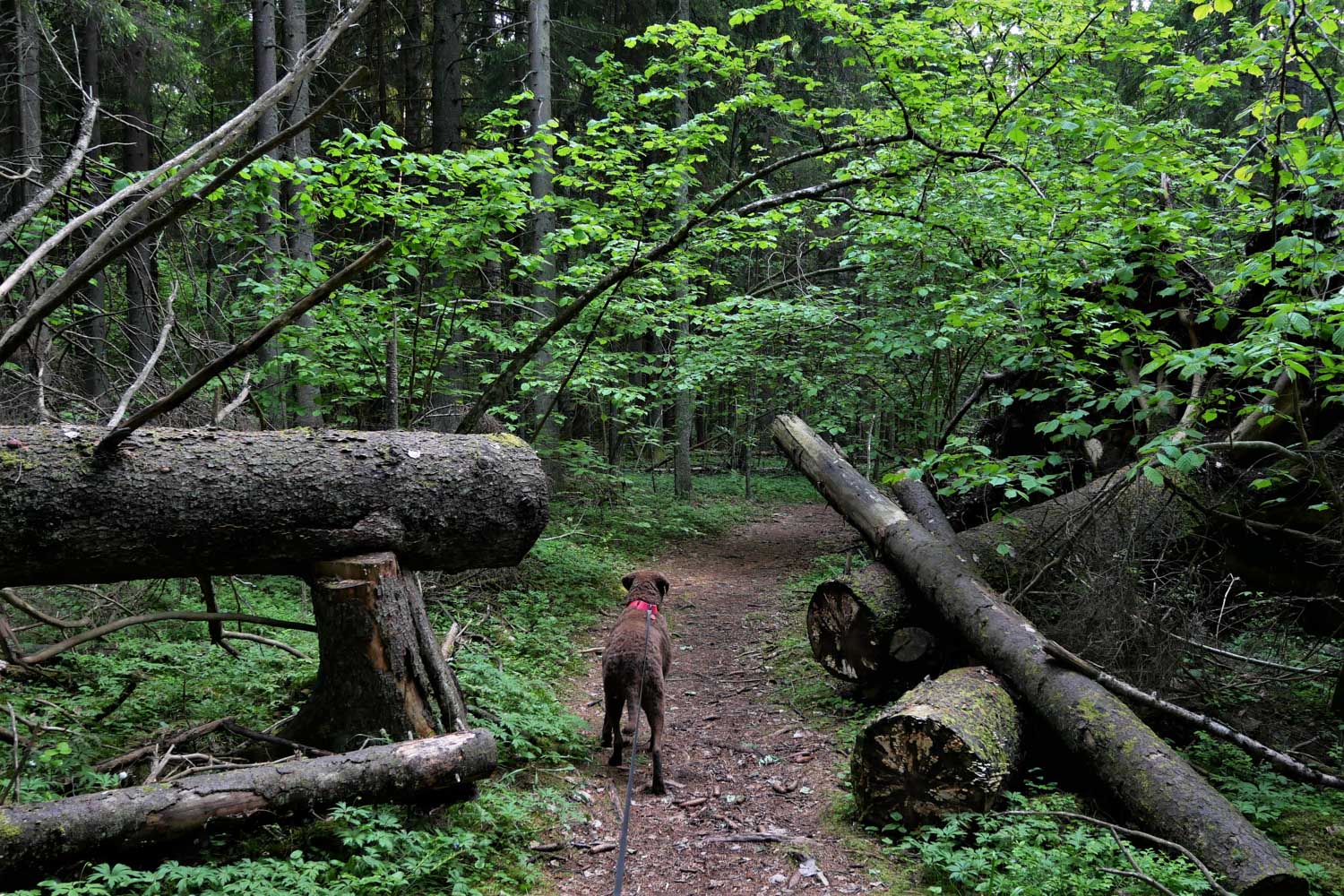
Dramatic-looking tree giants are lying down along the longer trail.
On nature reserves and conservation areas, windfall trees can stay where they are. If the tree falls across the path, only a piece of it is cut off to allow passage. Large trees host life even when they are fallen: they provide shelter and food for insects and for birds eating those insects.
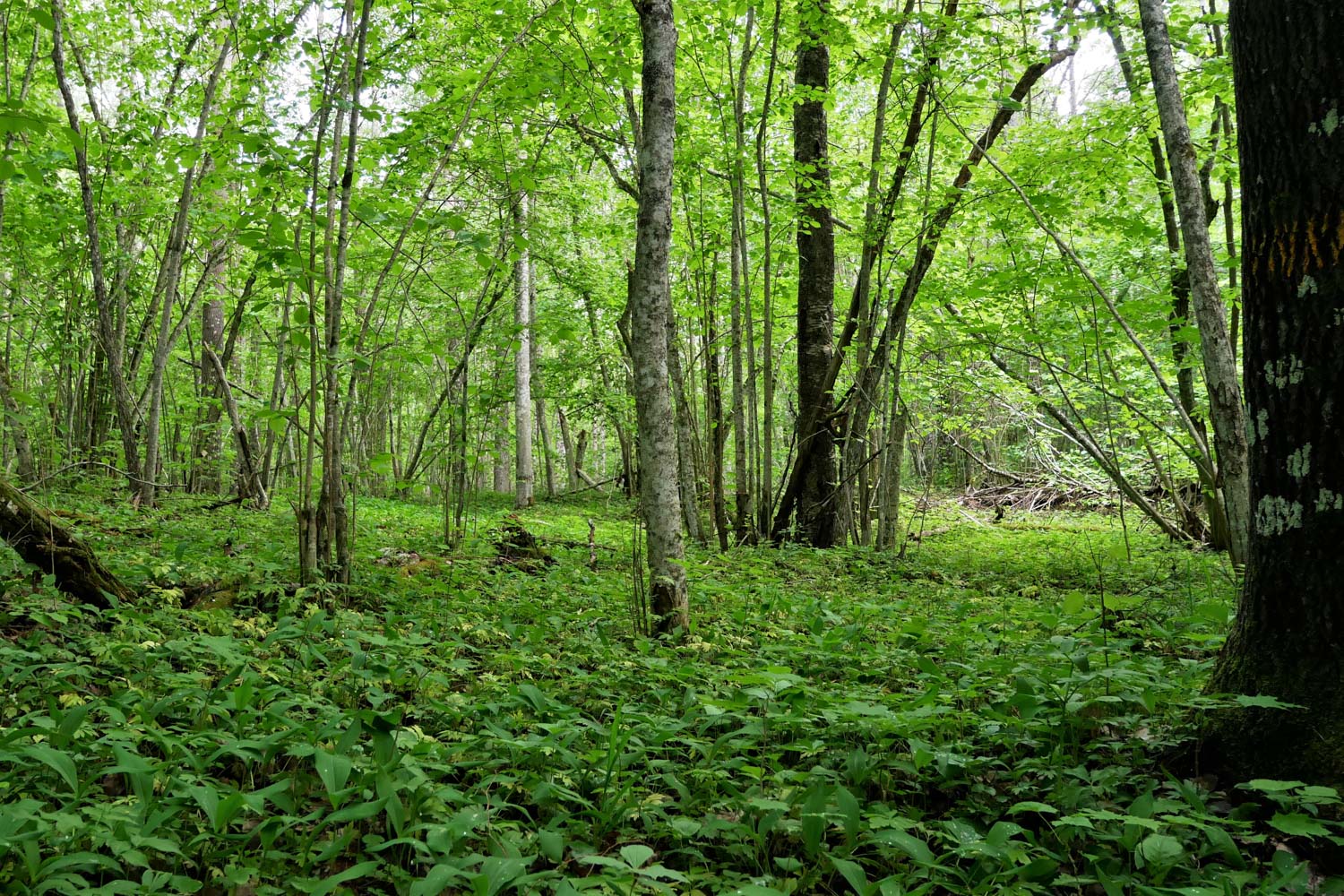

The longer trail is marked in yellow on the trees.
In some places, the path branches and might lead the hiker on smaller false paths. If you have a smartphone app with a terrain map or if you can use the map with a mobile browser, that helps you stay on the right route.
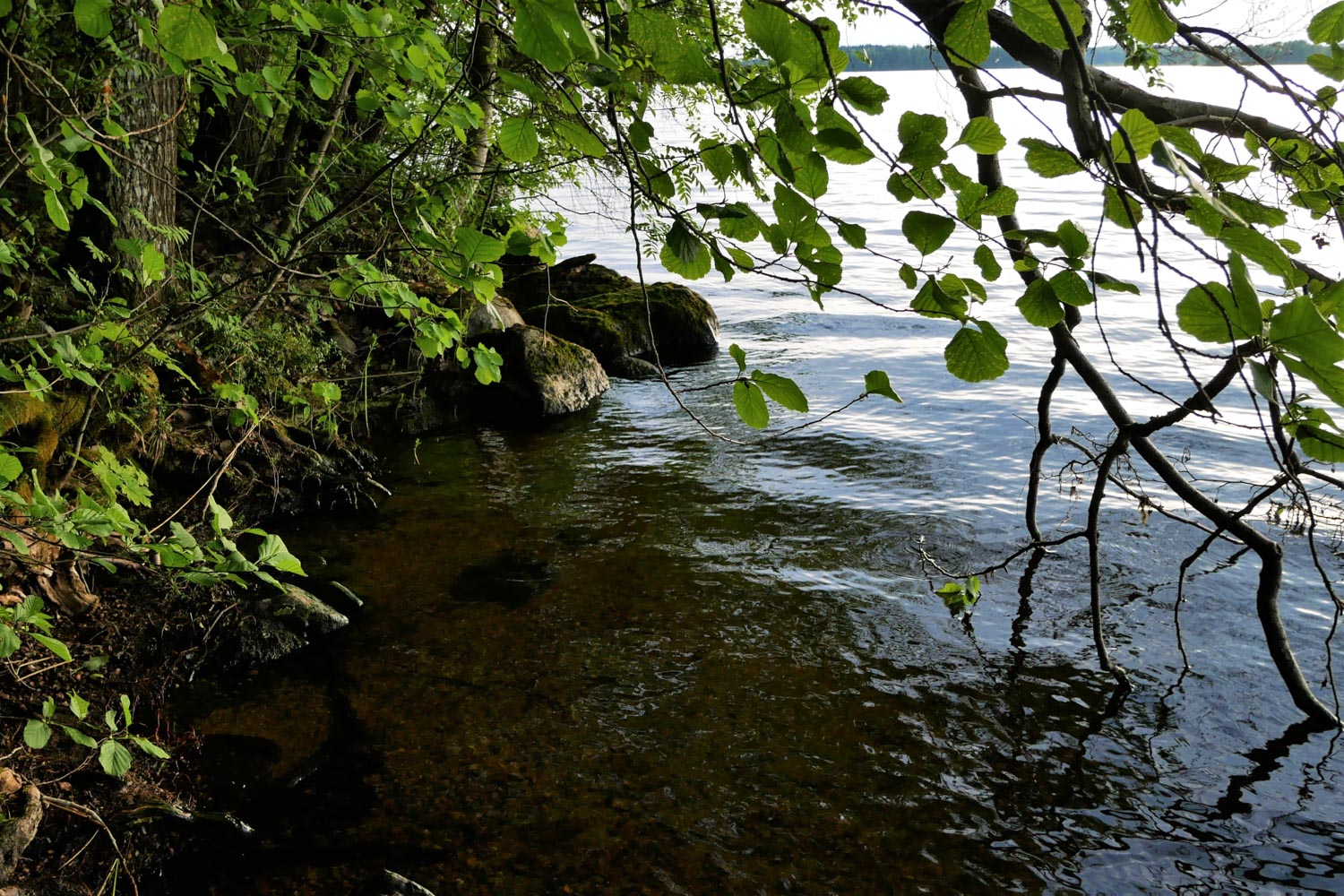
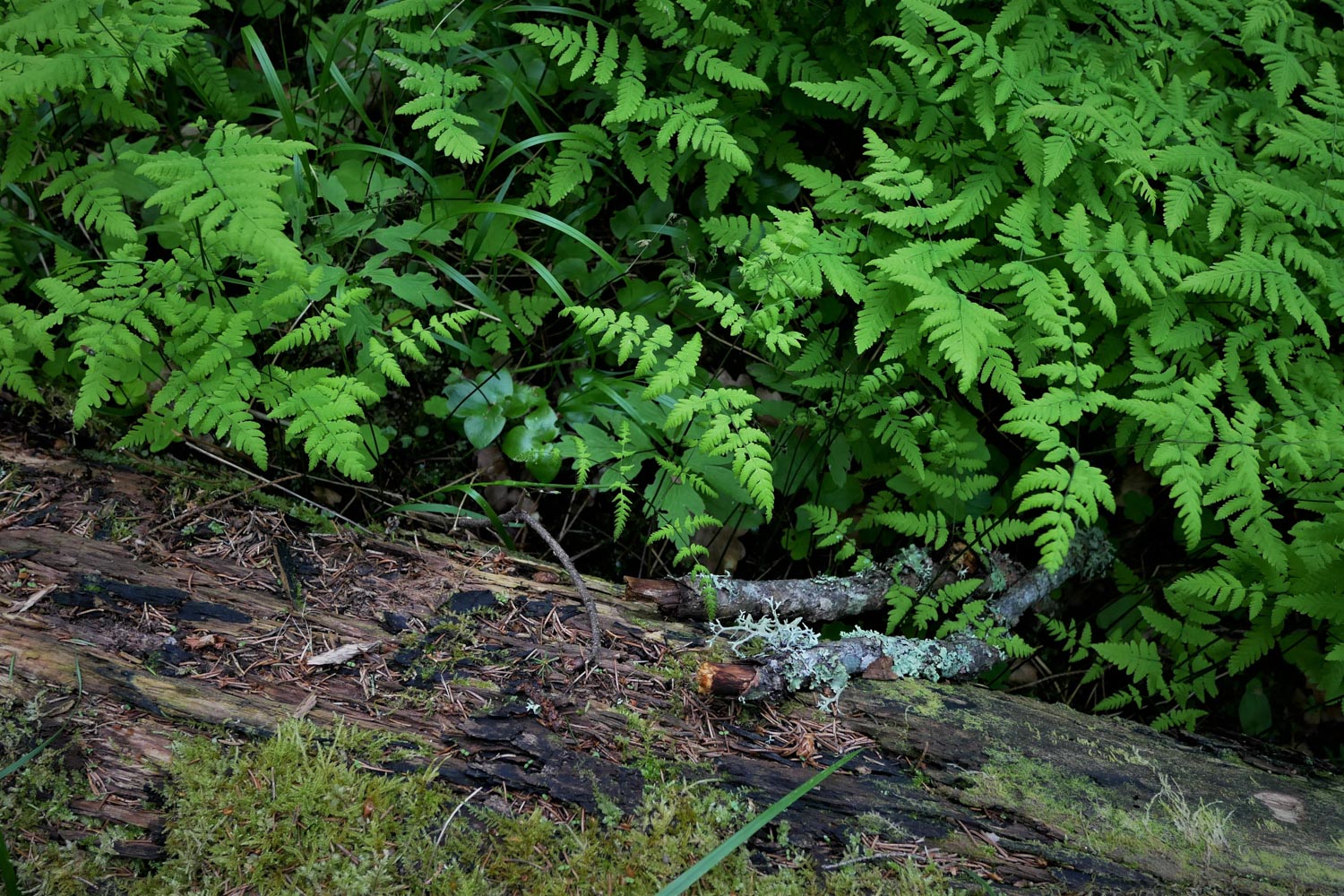
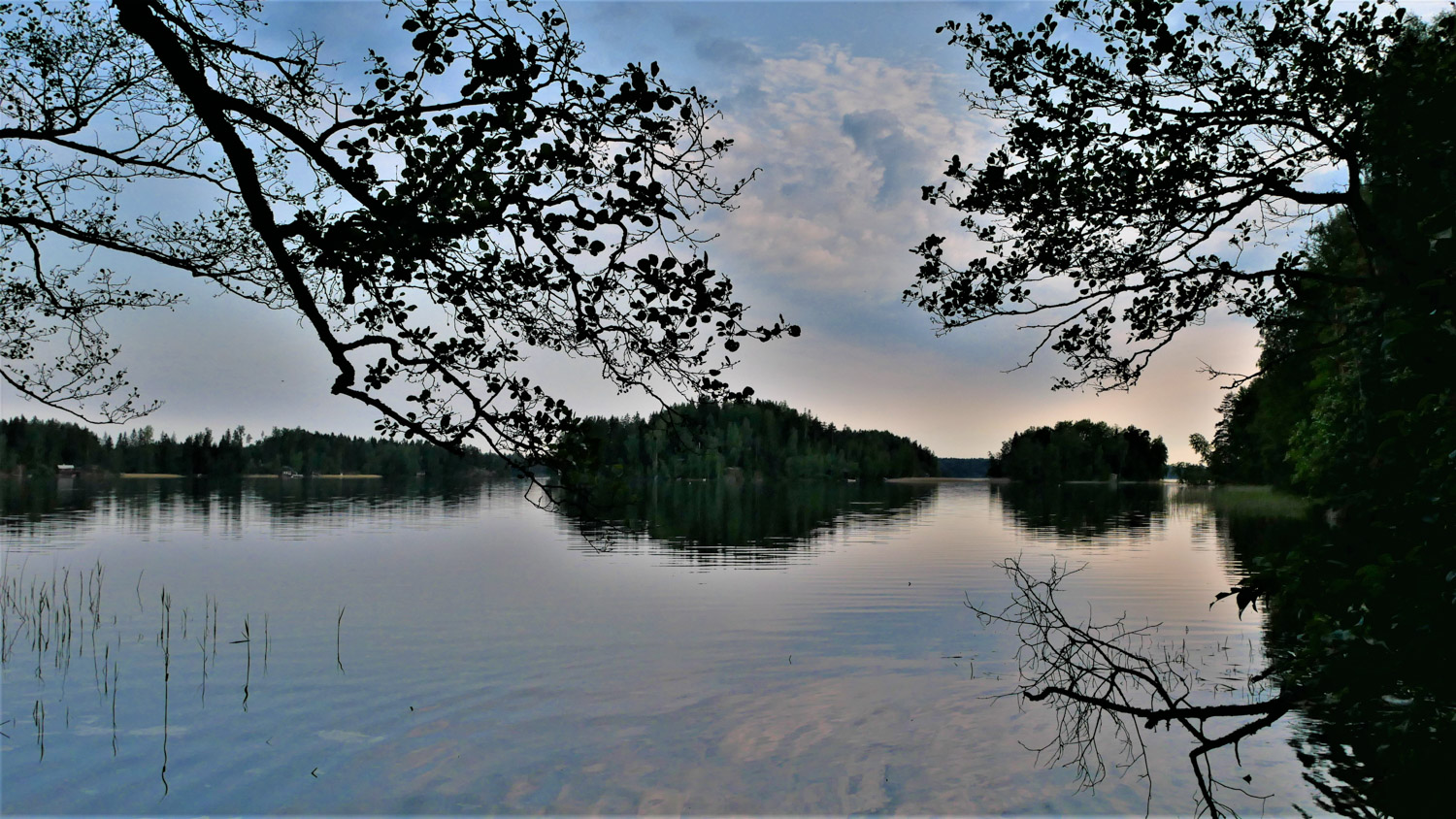
The longer western route provides many lovely views to Lake Lohjanjärvi.
Lush groves and high beach cliffs alternate along the route.
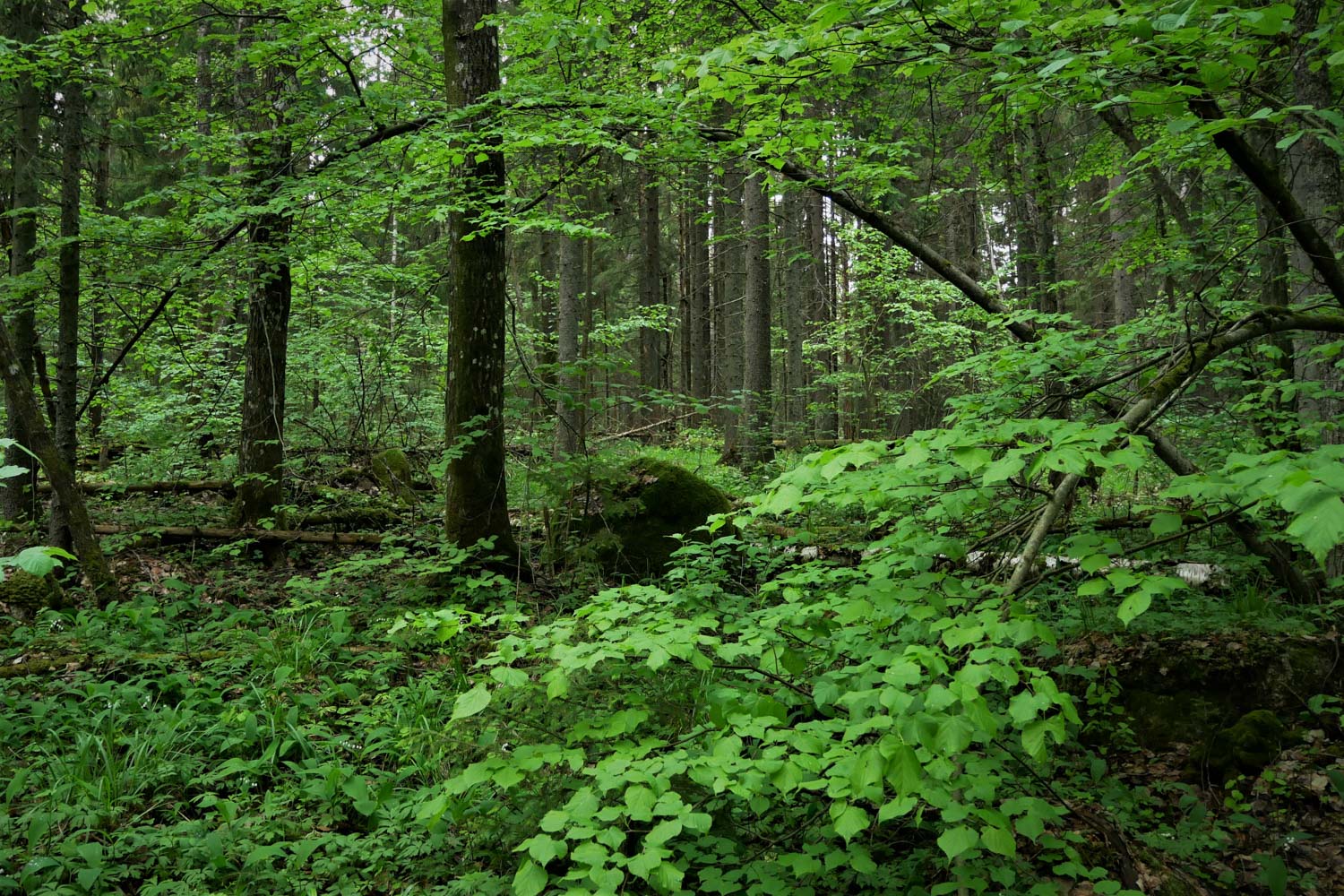
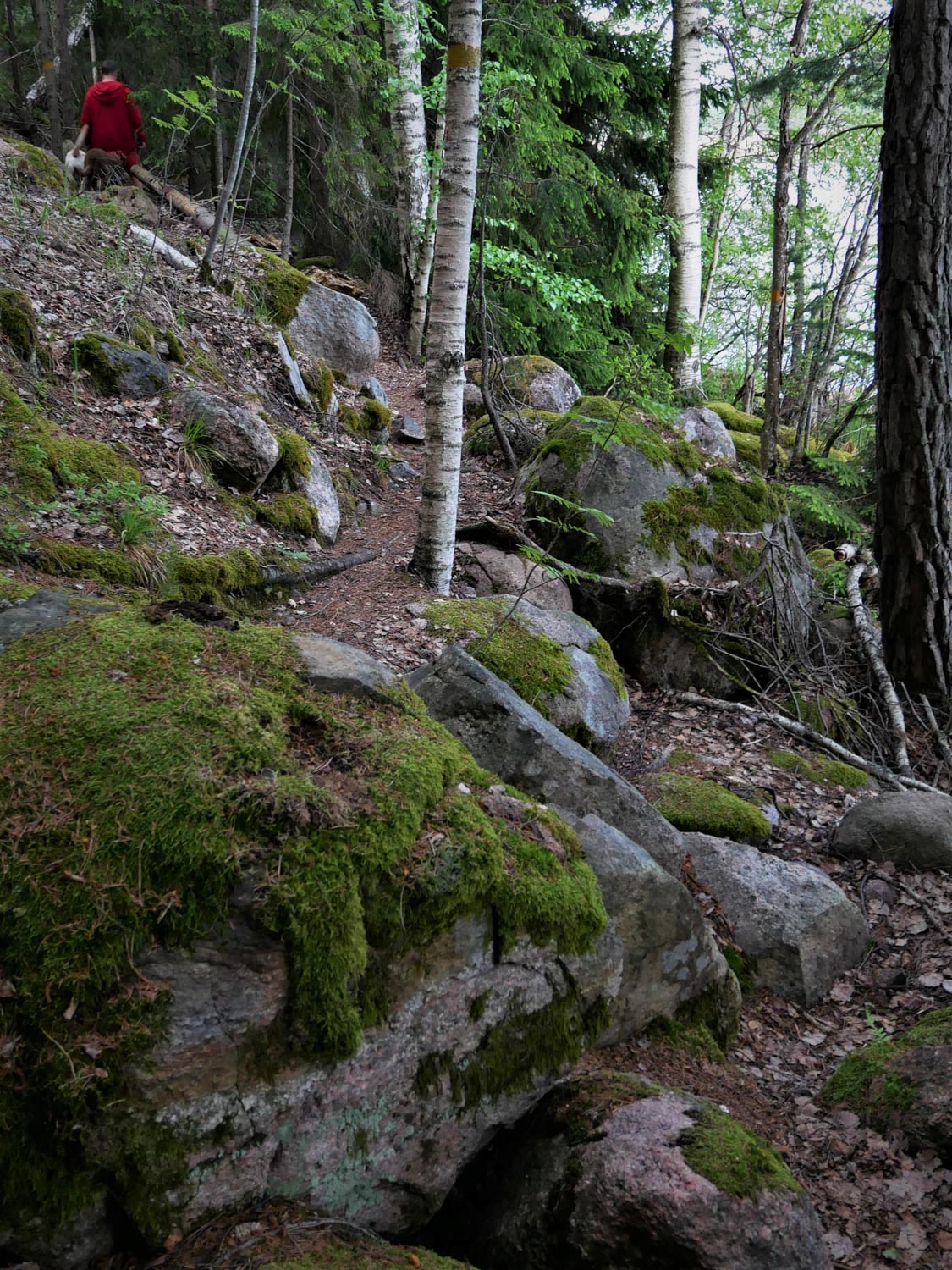
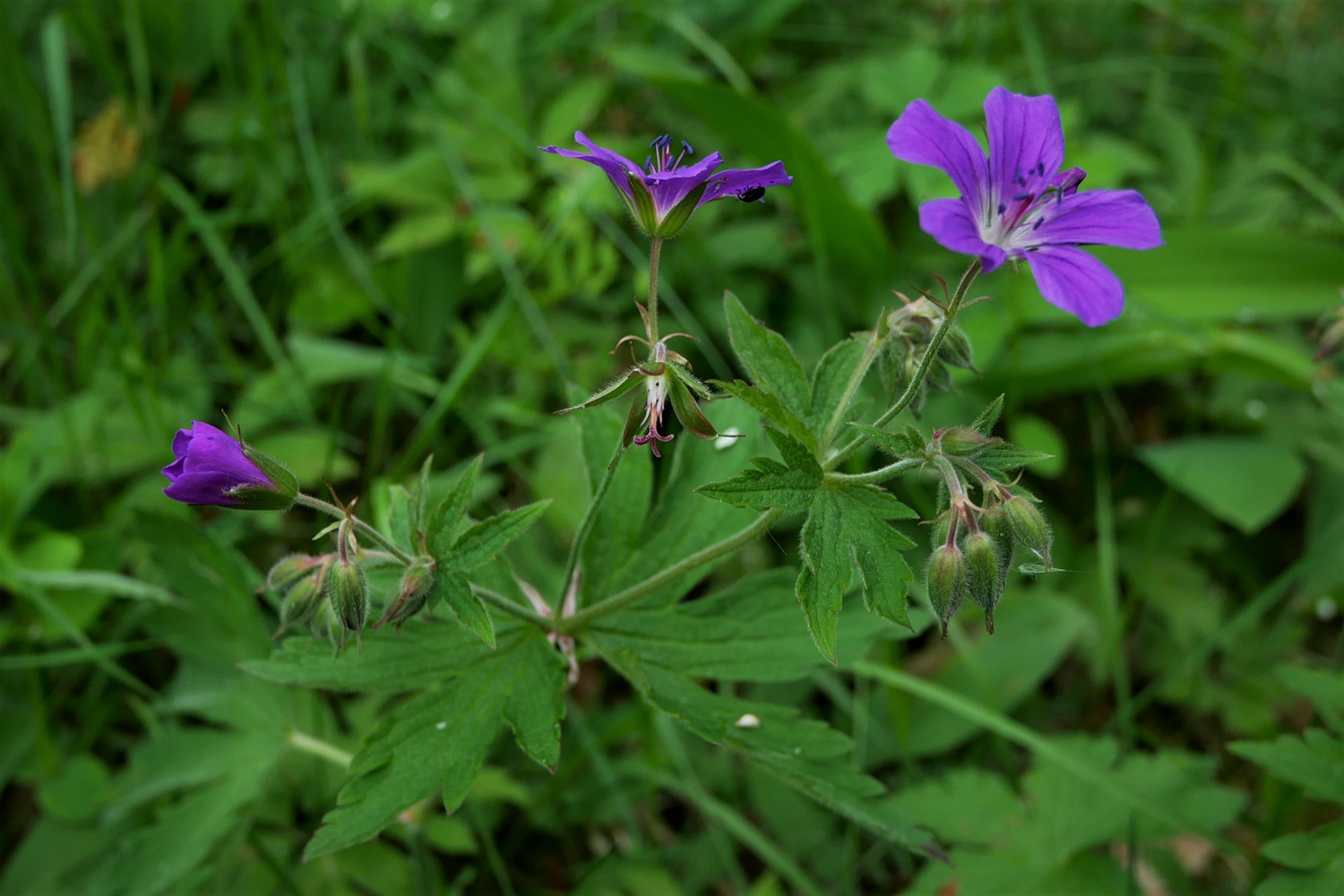
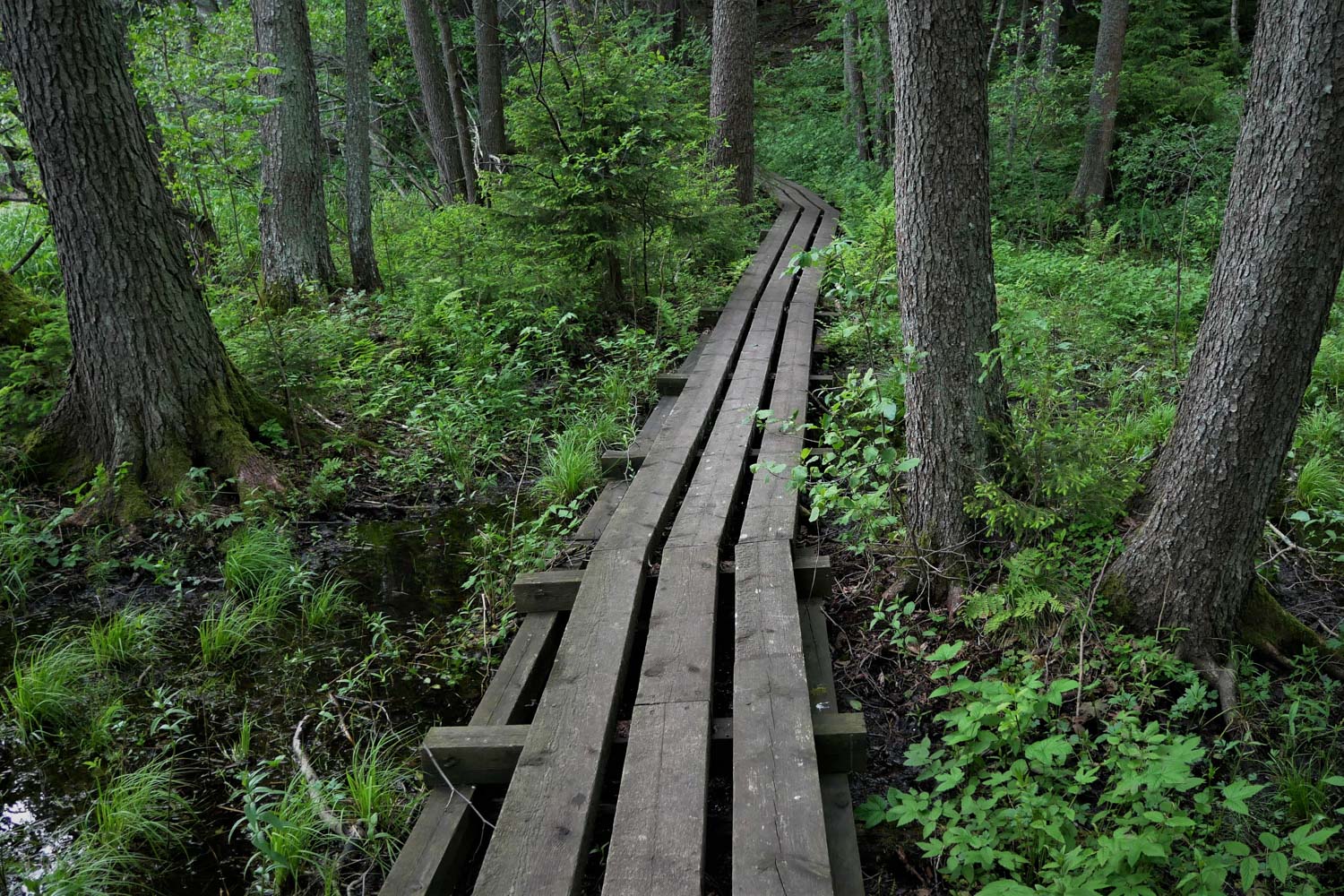
The furthermost leg of the long route also takes the hiker to the wetlands.


There are tables for eating packed lunch. One of the tables is located on a meadow in the middle of the nature park. The meadow is kept clear by regularly scything the grass. You can smell the summer in the meadow and see how versatile the flowering is.
On the edge of the meadow, sheltered under the trees, you can sit down and relax on a bench. Although the lilies of the valley surround us with their beauty and smell, we can’t stay for longer but have to get on our way.
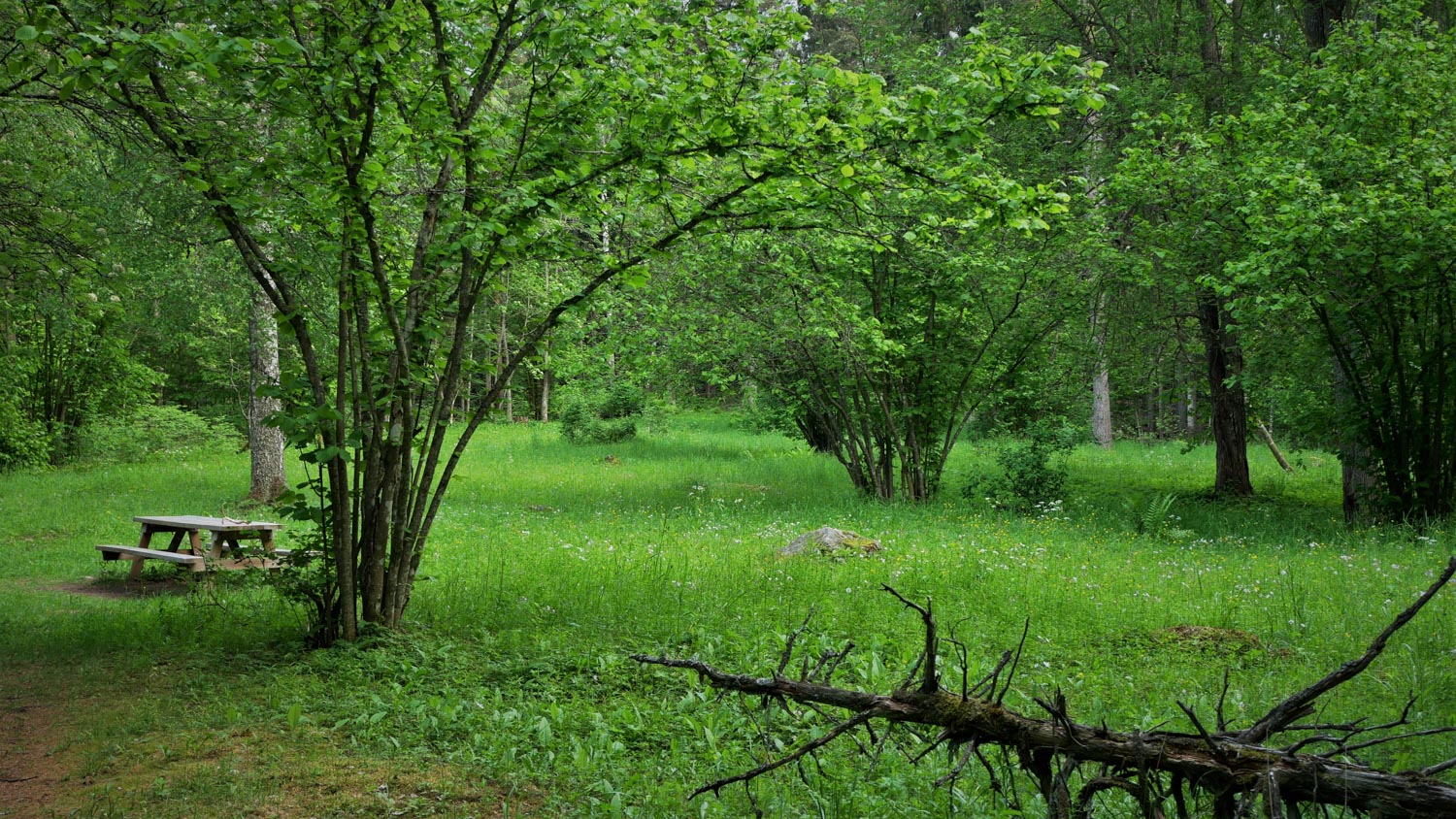

We get back to our car, and drive about three kilometres back to the direction where we came from. There’s only one parking area by the road to the nature park. A sign that leaves no room for doubt, points us to the trail that leads to the Torhola cave.
On the opposite side of the parking area, there’s a sign that says “Torholan luola, Torhola grotta”. I think that it deserves to be called a grotto, and not just a “cave”. We head out on the nature trail and remember that this is area is also protected.
The underground realm of Torhola – the largest limestone grotto in Finland
When you arrive at the grotto, you will know. An information board shows you to stop, and on the bench beside it, you can muster your courage or just rest. Impressive moss-covered oak trees stand behind the information board.
We don’t have any other special equipment with us other than a head lamp and rugged shoes. Normally, in places like this, you should have a helmet and clothes that withstand dirt and crawling. Caves also have tight places and passages so that you shouldn’t wear clothes that have hoods and loose pockets that could get snagged. Before you descent into the cave, please remember that you are doing so at your own responsibility.
I am hoping that the grotto of Torhola is so large that even without special gear we can manage, if we are careful. I am a little excited. To be honest, I am a lot excited. I have never been inside a cave? Will it be cramped? Will it be scary?
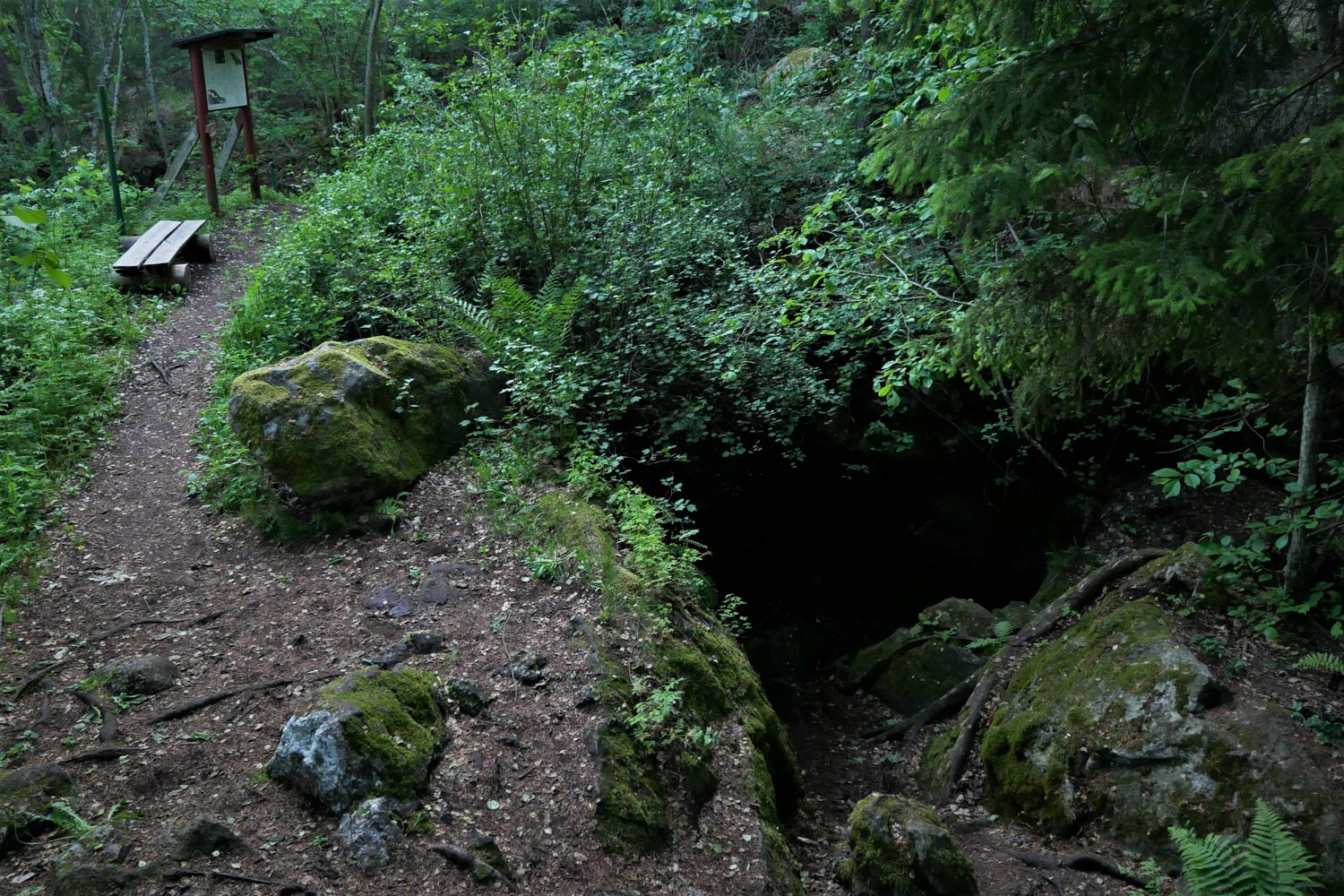
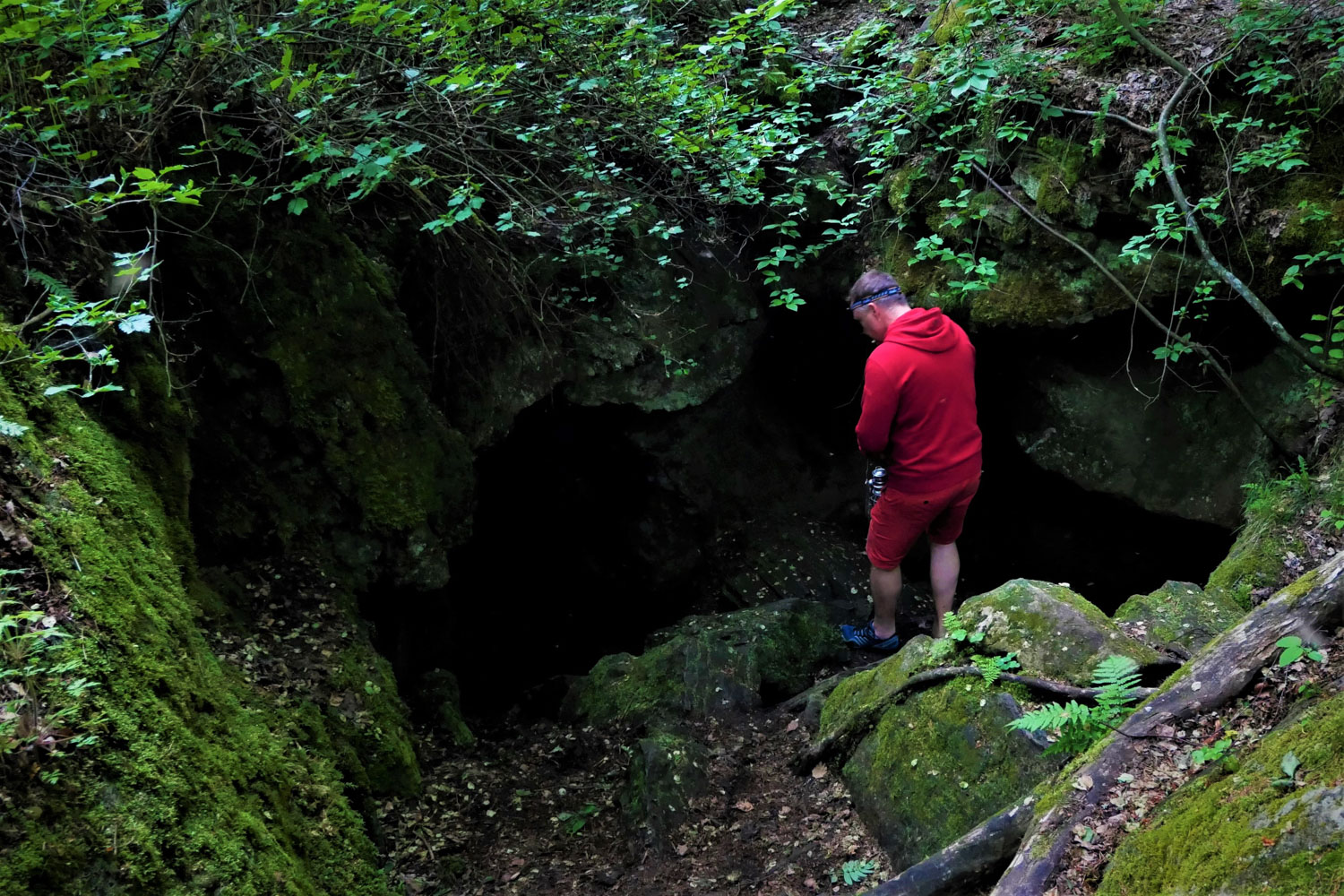
We descent into the grotto through the opening on the left. We are now in the “vestibule” or in an antechamber of the Torhola grotto. The grotto consists of three chambers of which this is the first one. I am so excited. What will we find further ahead?
My head lamp illuminates the massive rock walls of the grotto. My goodness what a place! I shout out spontaneously: WOW! This place is so cool and big!
I was expecting a lot smaller and tighter place, but this is awesome and spacious.
It’s also not as scary as I would have thought – actually I want to go deeper.
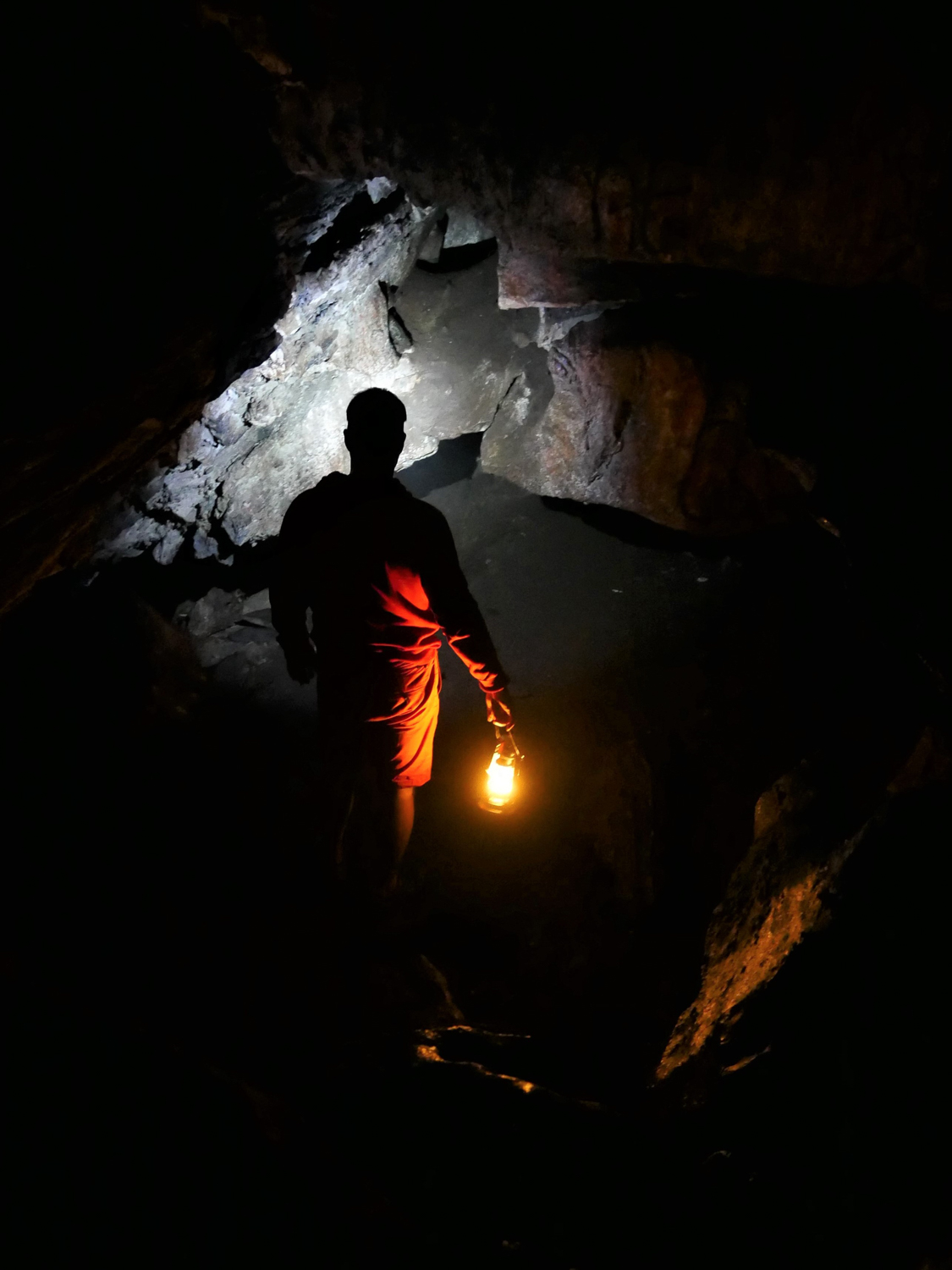
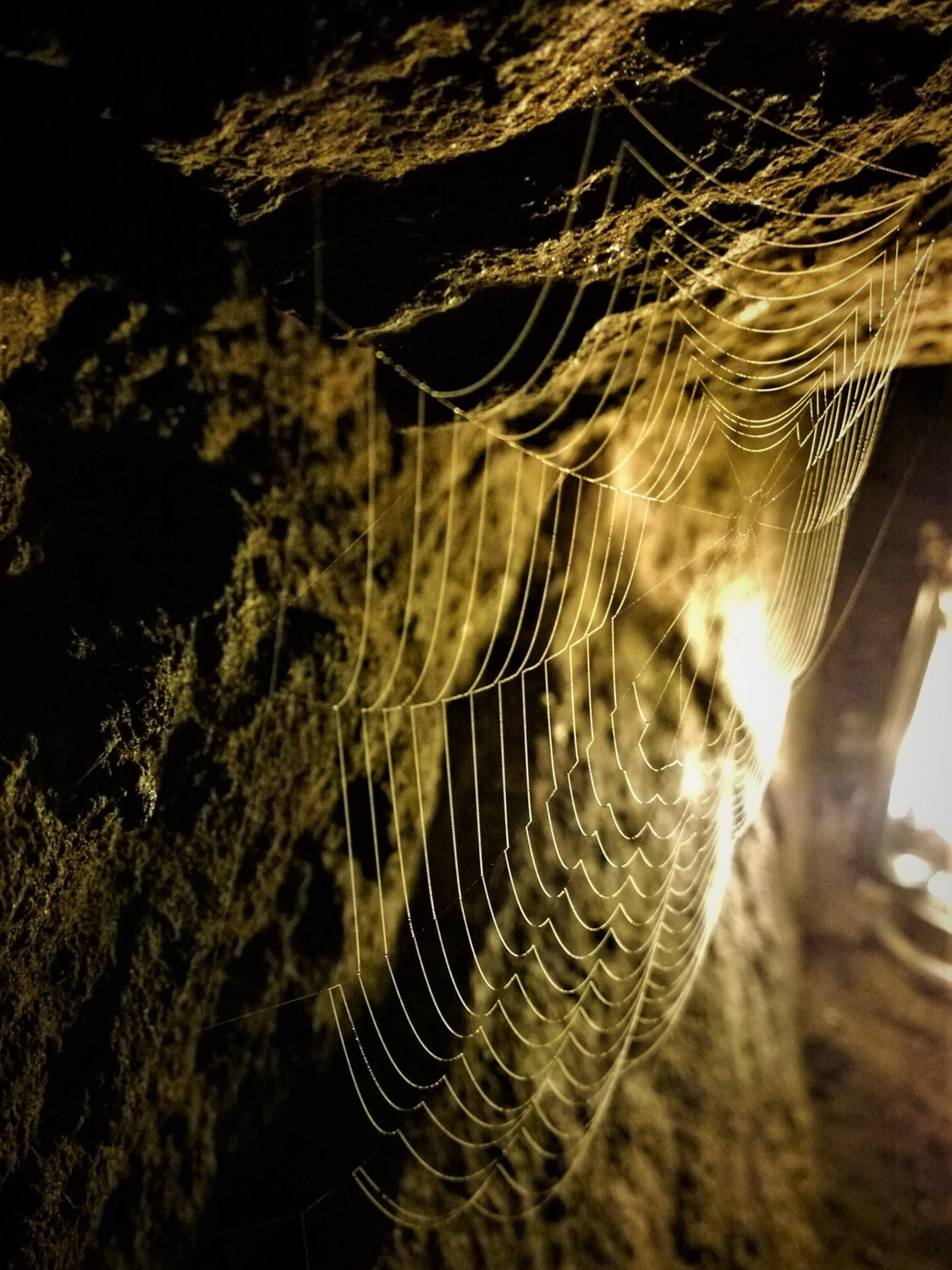
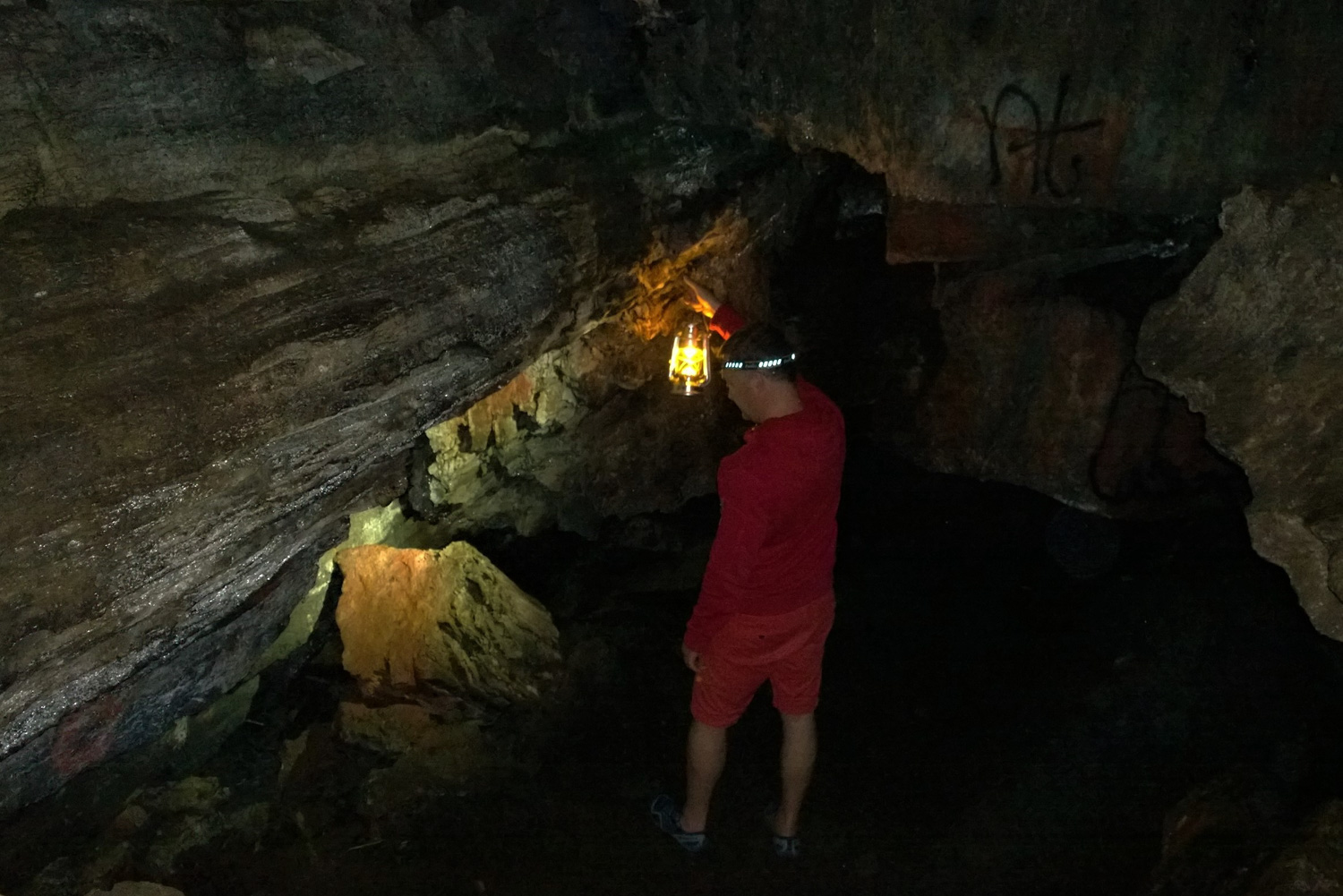
We descent further down into the so-called hall, which is the second chamber in the grotto. The walls glimmer in the light what we have brought with us.
The grotto of Torhola is the largest limestone cave in Finland. Water flowing through the cracks in the rock has slowly dissolved the limestone away and formed the cave. It is believed that most of the formation of the limestone grotto has taken place during the last 3000 years. Today, the grotto is not growing in size, as no water flows through the cave anymore. Even it has just rained in Lohja, the floor of the cave remains dry.
The total length of the grotto is 31 metres. Breadth of the cave varies from 1 metre to 6 metres depending on the chamber, and the height from 1 metre to 4 metres.
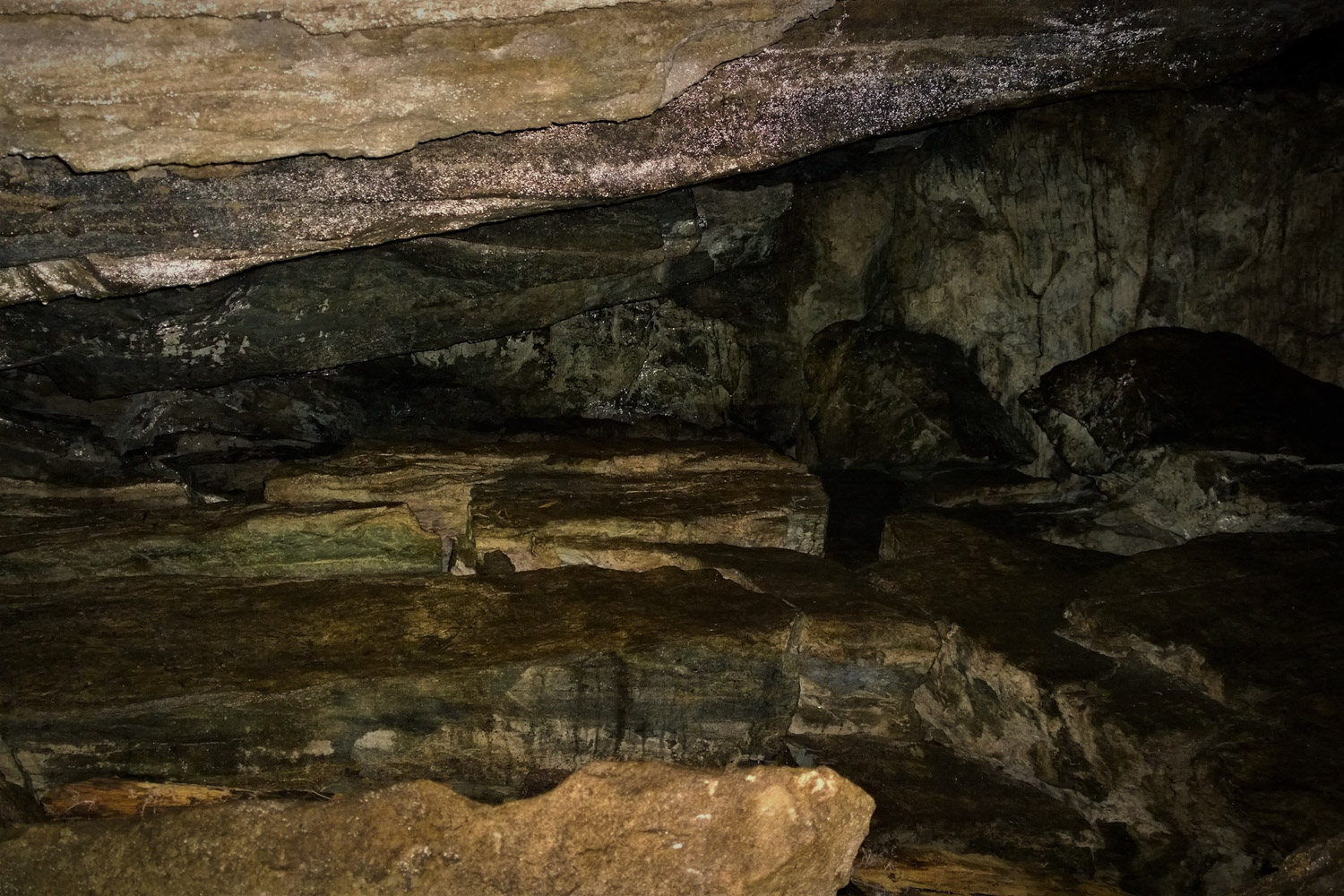
This place doesn’t feel cramped as the ceiling is high. It is damp, though, and cooler than in the forest outside.
We look around in wonder, and focus our eyes on the furthest corner on the left. If we’d want to make this even more exciting (and had a coverall and a helmet, maybe also gloves) we could go deeper still, into the basement of Torhola. The basement is the third chamber in the grotto. However, we decide that we have seen enough for our first time as cave explorers.
Now I know what it feels to sink into the underground, literally.
Actually, it’s not all that bad.
Outside, the sun has already set. It is time to get back above ground.
There is a big boulder between the vestibule and the hall, but for a person with normal health and sure feet will handle the obstacle quiet easily. Using hands helps.

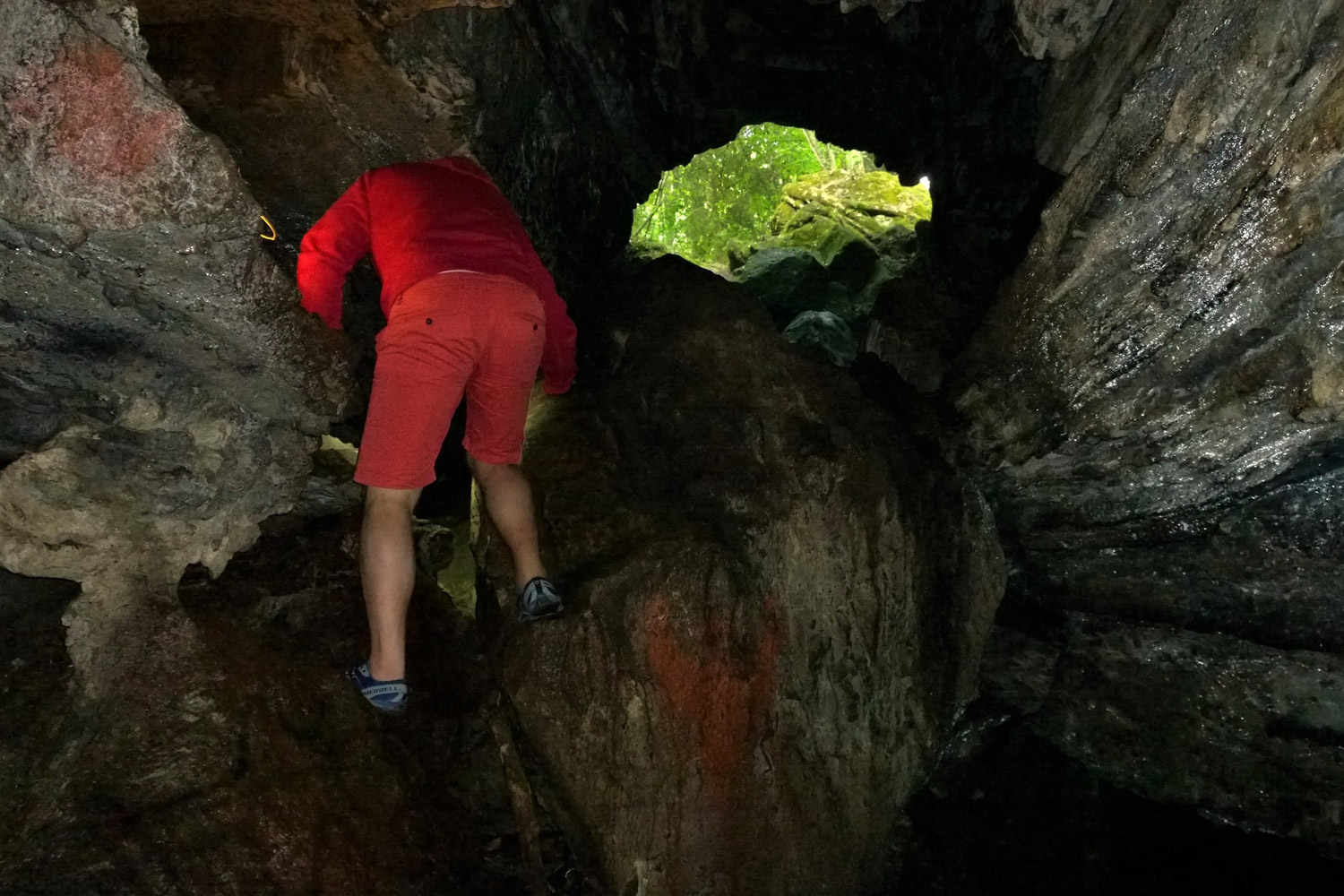
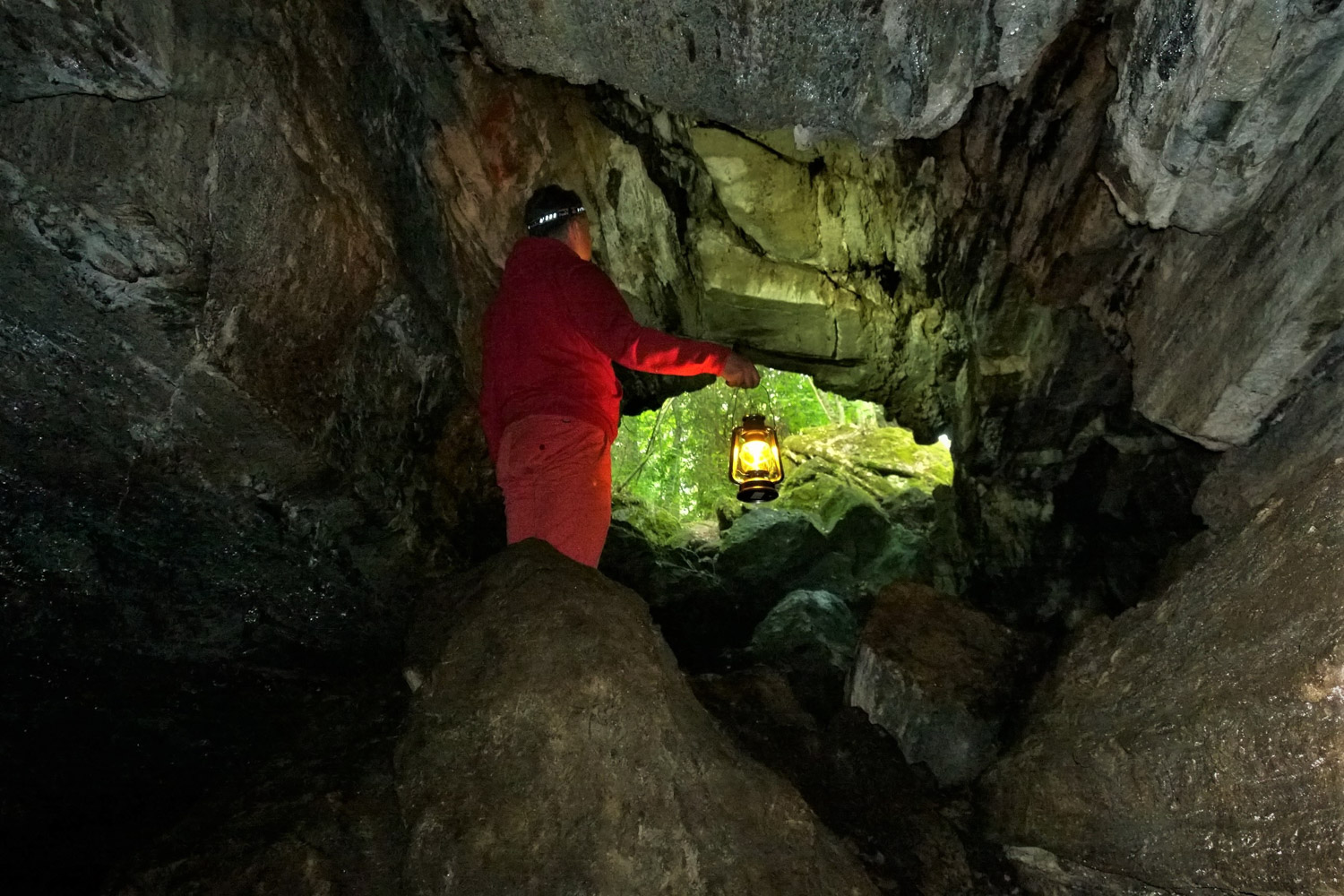
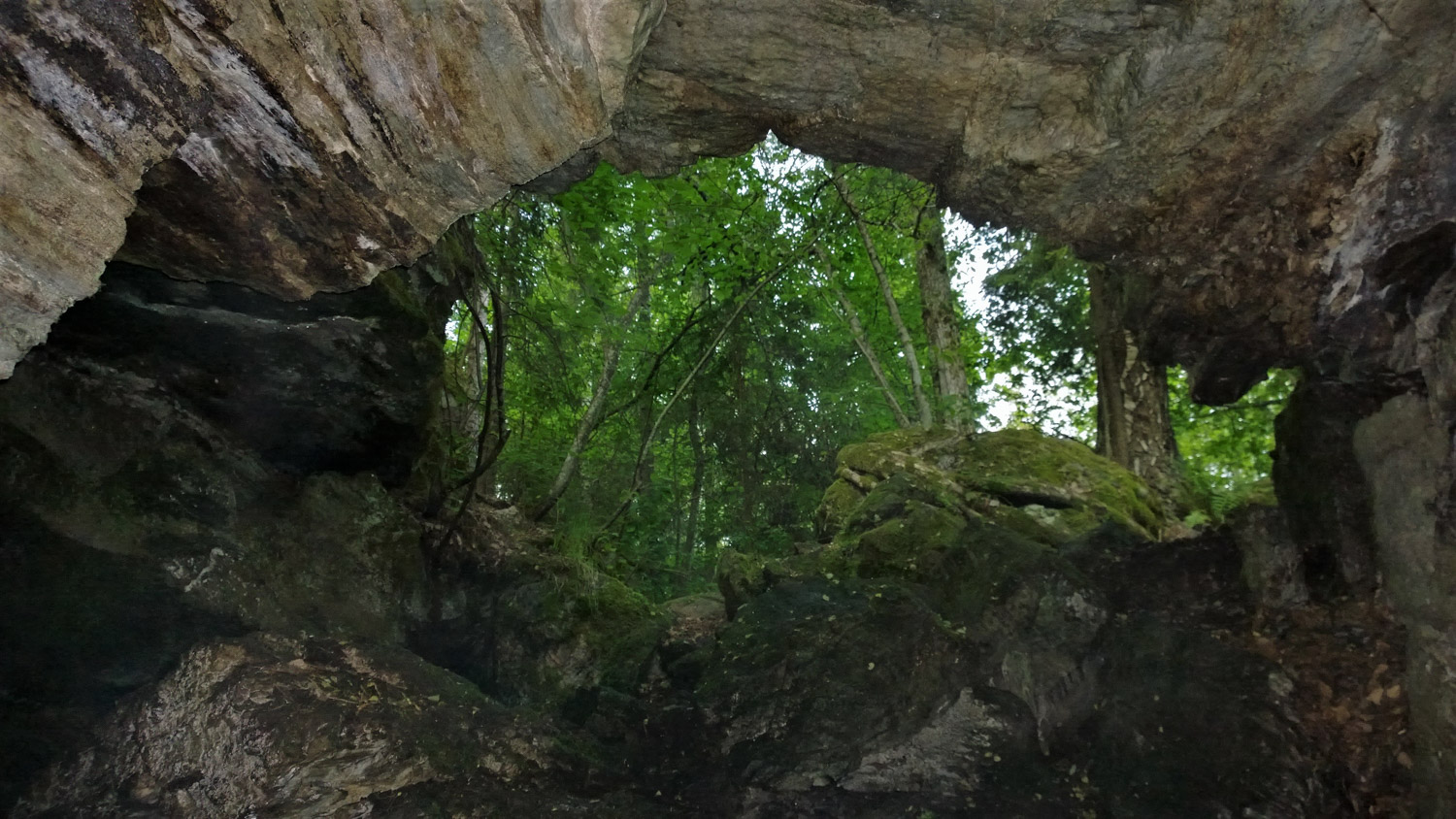
When I get to the vestibule, my camera lens fogs up. The air outside is much warmer than the air inside the cave.
After visiting the grotto, we decide to do the whole nature trail. So, we descent steeply towards the shore.
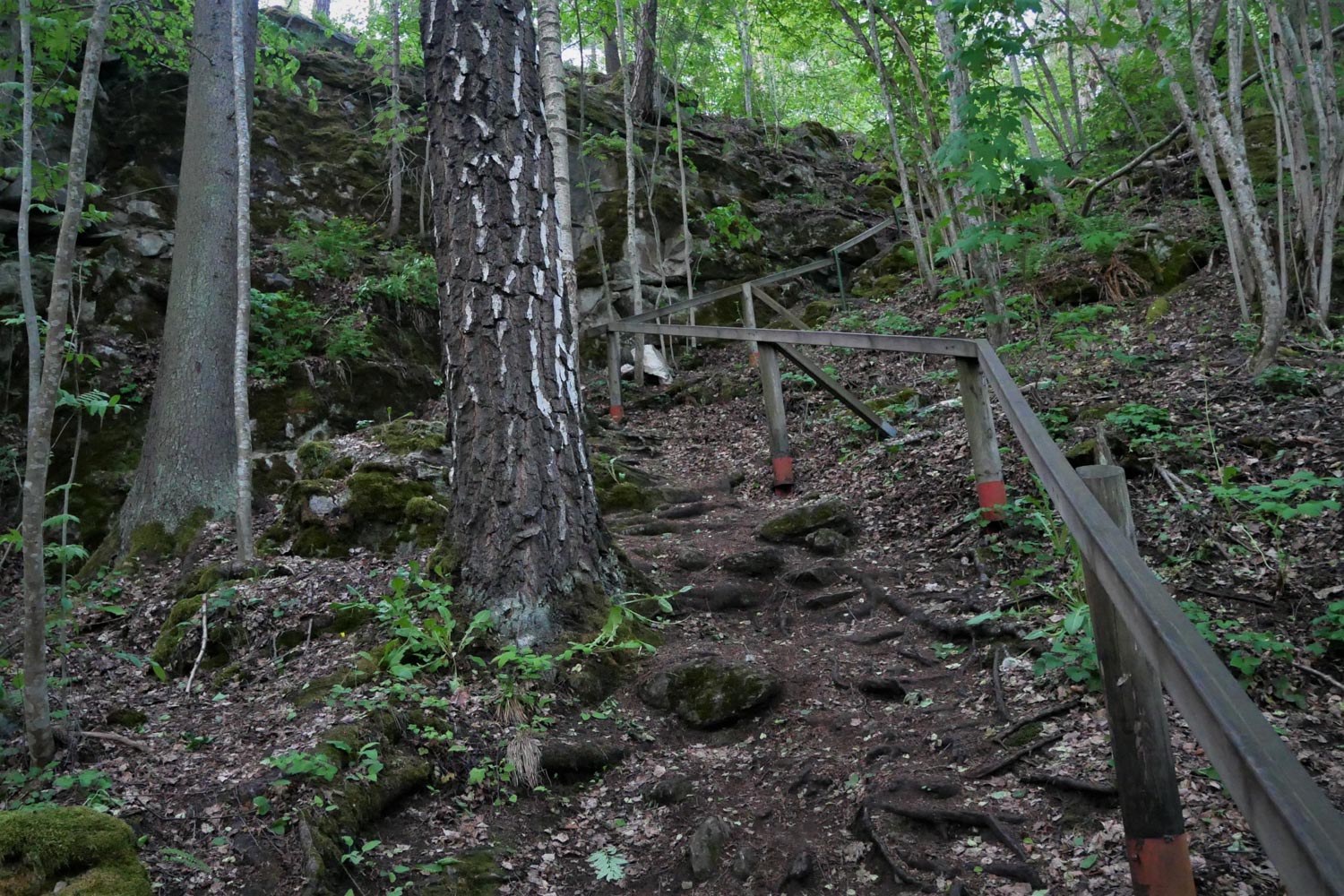
The summer evening is warm and calm, and the sun is setting.
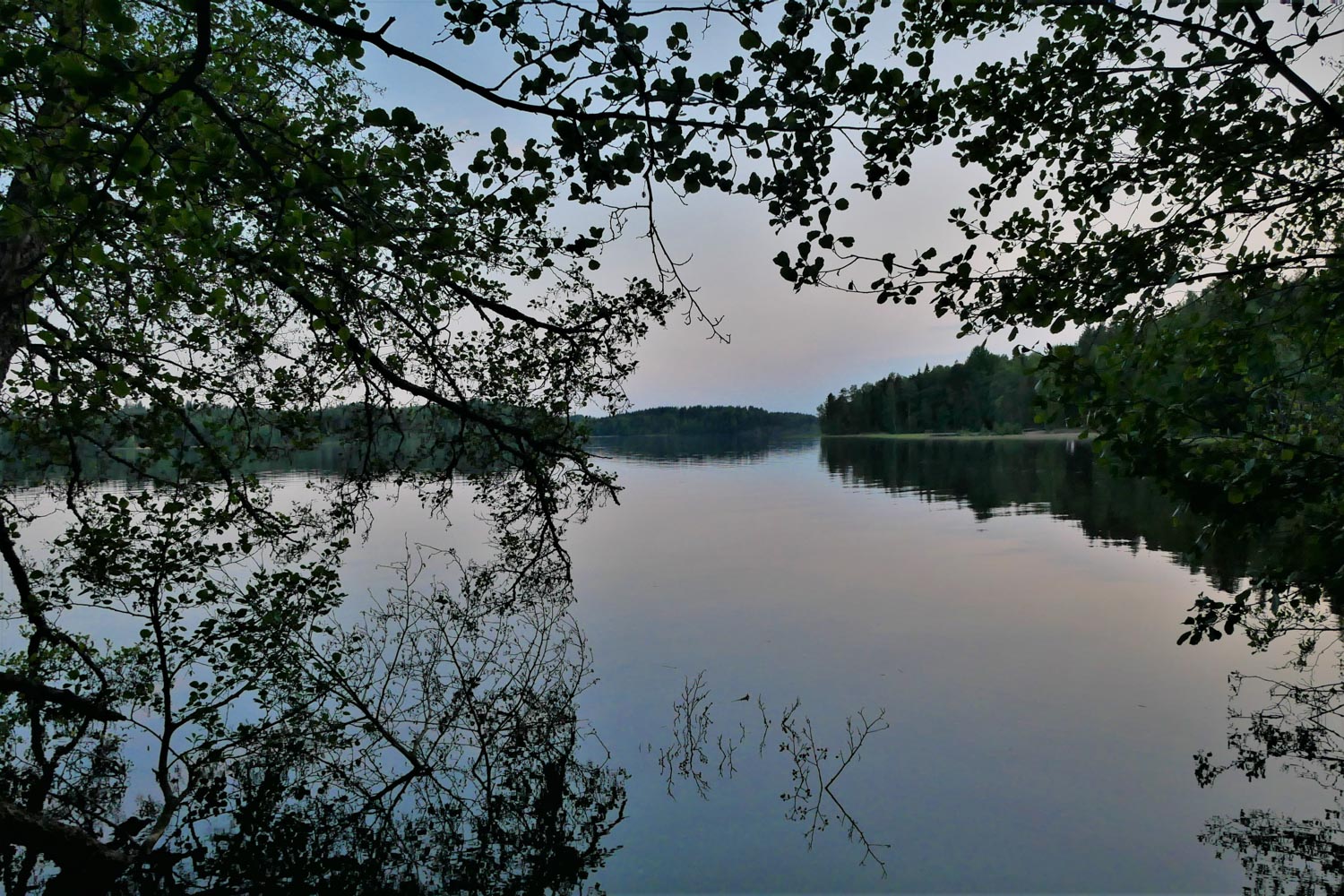
Glancing to the lake past handsome black alders, we enjoy a complete silence. Not a soul is afoot, not even the elusive and endangered elaterid called Pseudanostirus globicollis, found only in the region of the grotto.
We continue walking clockwise on the nature trail through a sloping grove, where white and wych elms grow – among other attractive hardwood species
The end of the nature trail in the reserve rises upwards, but only moderately, being much easier than the one with the guard rails.
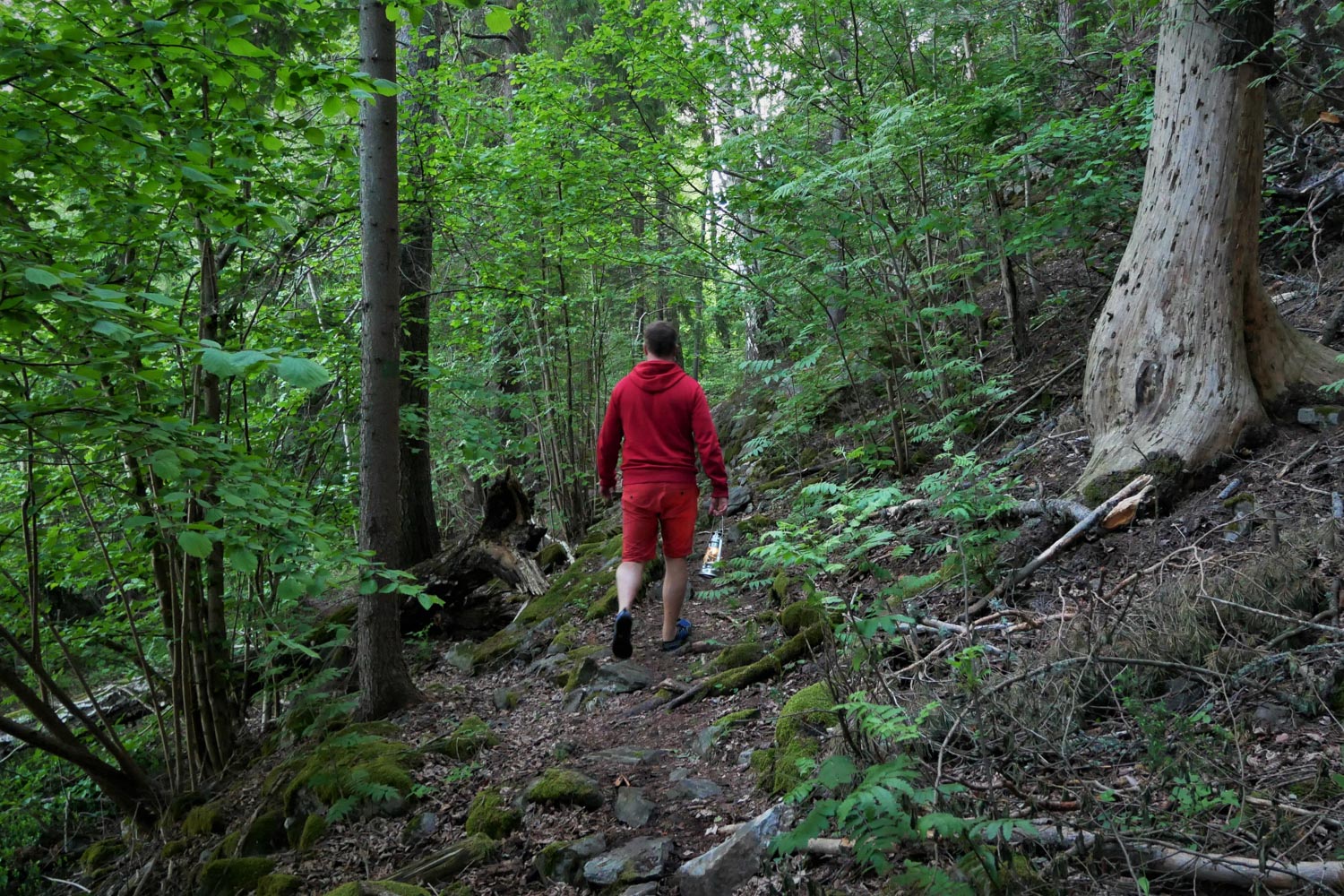
We are back on the road and the parking area. My heart is pumping rapidly, but in a good way – I feel invigorated!
It is quite something that we can experience this kind of adventure less than an hour’s drive from the capital!
Life’s little adventures don’t necessarily take an entire day, because there’s a lot of light available in the summer.
More information and links:
There are wooden causeways along the trail, and in some parts the terrain is rocky, so unfortunately it’s not suitable for baby carriages.
Translation from Finnish: Mikko Lemmetti

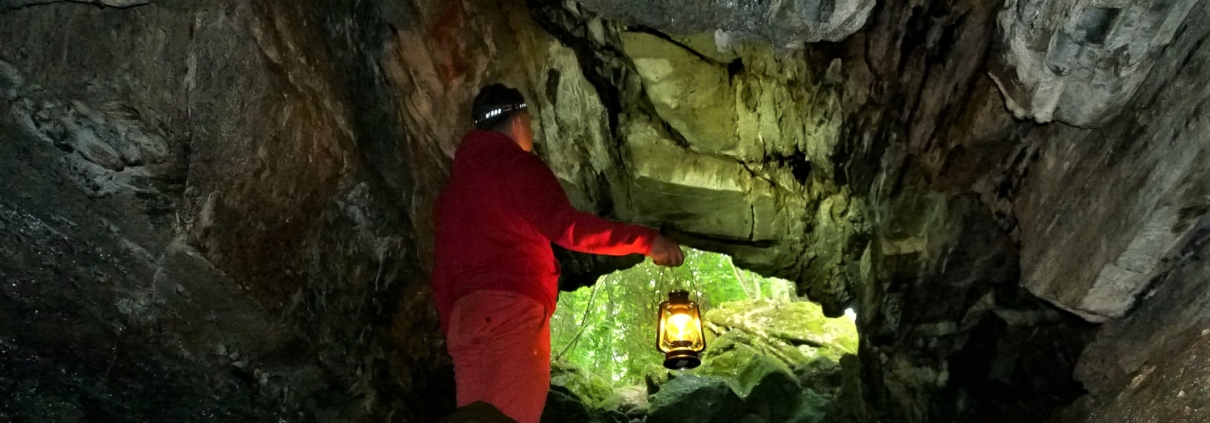



Leave a Reply
Want to join the discussion?Feel free to contribute!